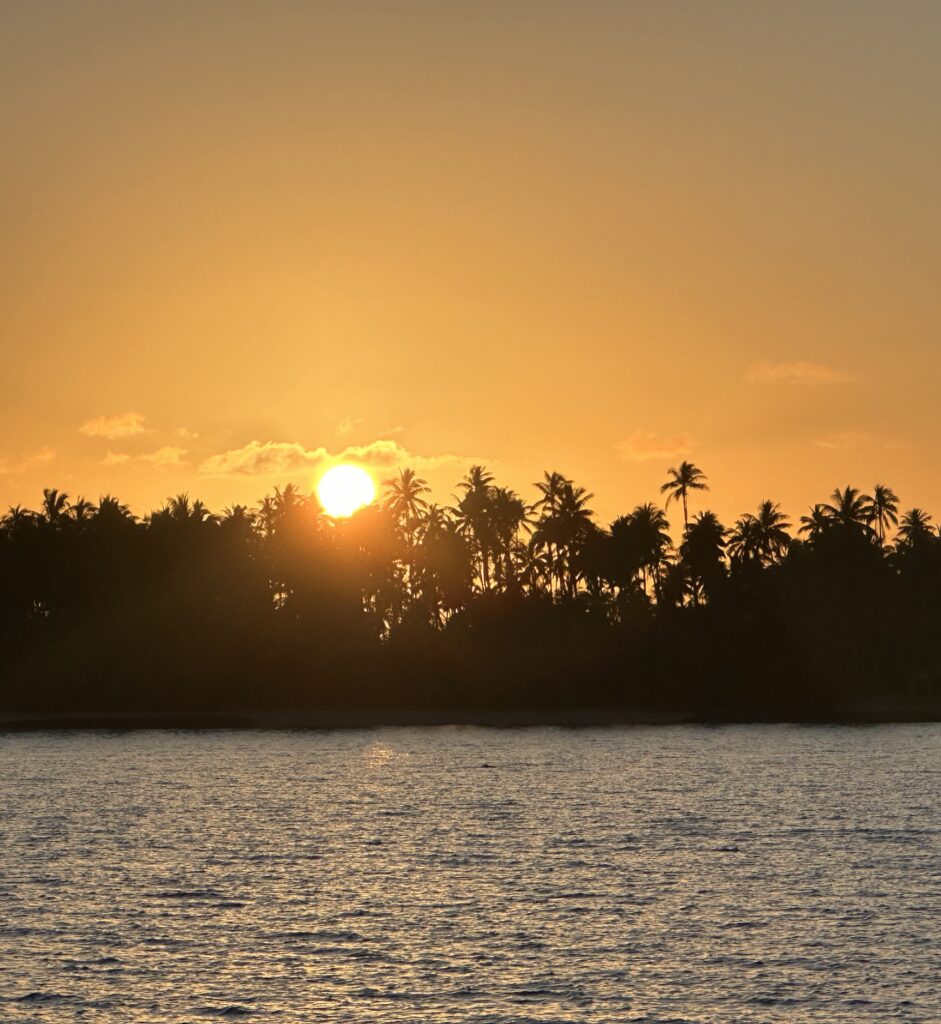Makemo is one of three main atolls in the Tuamotus archipelago. The village has 800 inhabitants, and definitely has more amenities than the first atoll we visited, Raroia. There is an elementary school serving the other surrounding atolls, an airport as well as several grocery stores where we can provision.
We sailed the 80nm overnight from Raroia, together with 7 other sailboats that have waited for the weather to settle before making the passage. We entered the east pass at the village in the morning, at 6:30am. Entering these passes into the lagoons of the atolls needs to be timed with the tides, as the currents can be quite fierce. The pass is a man-made channel, which was quite wide, so we entered without any issues on an ongoing current of 2,5 knots.
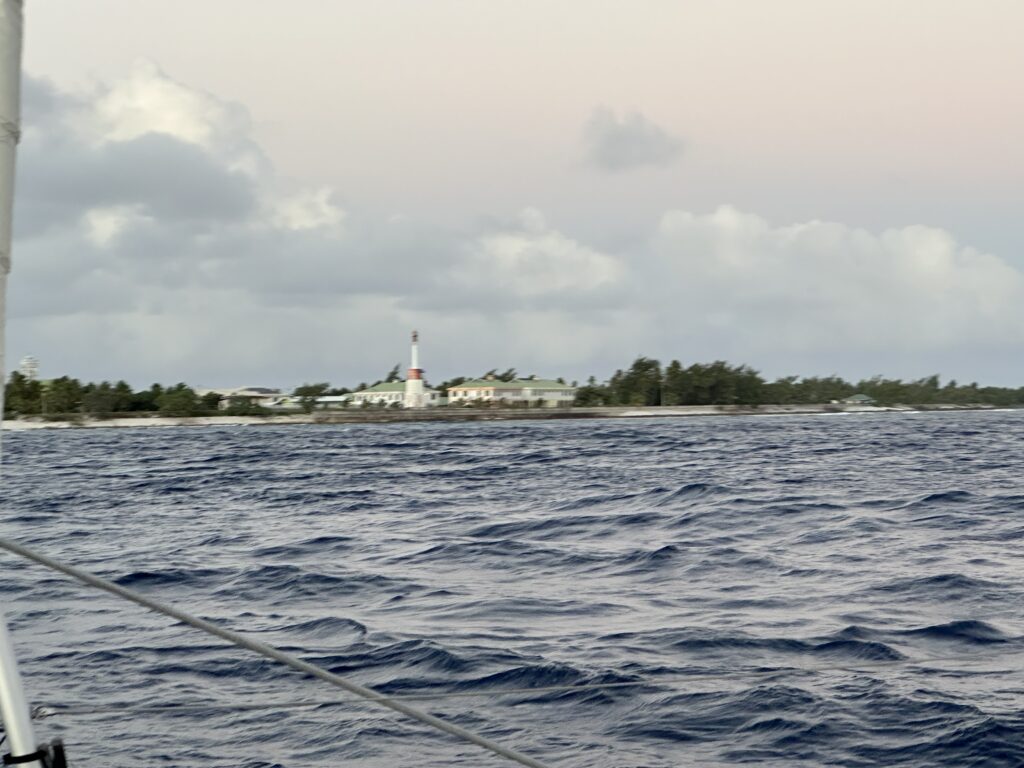
We anchored by the village, which was not an easy task. The seabed was covered in rocks and corals, with only a few, small sandy spots in between. We had to try twice before we found a location with good holding for our anchor.
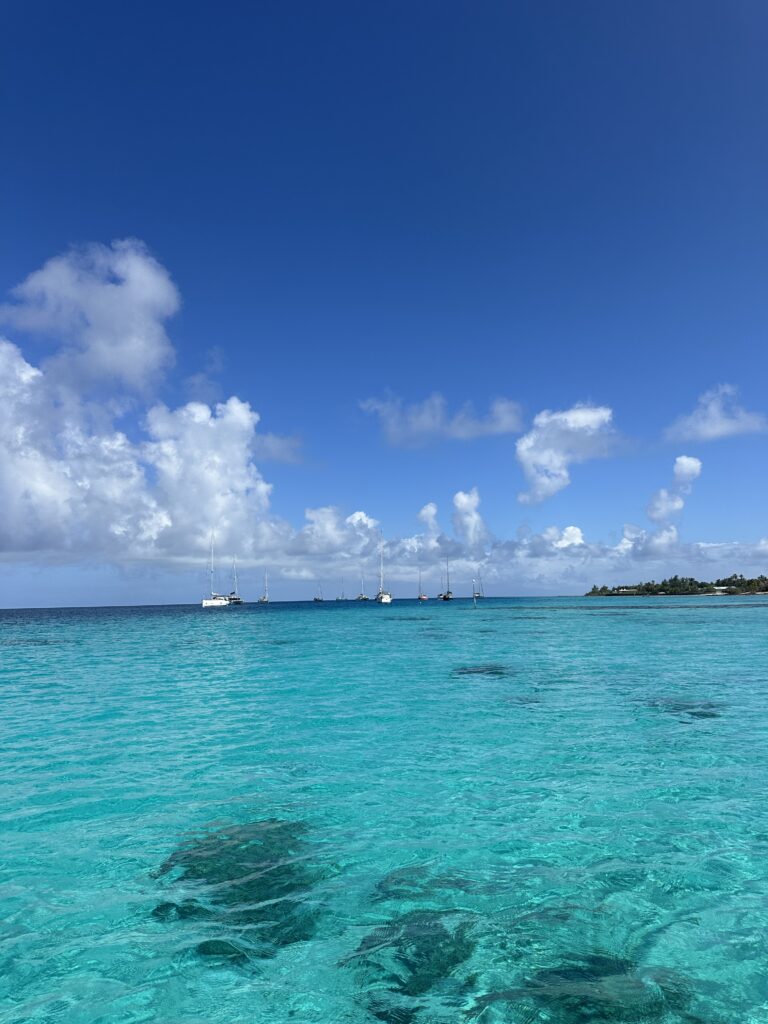
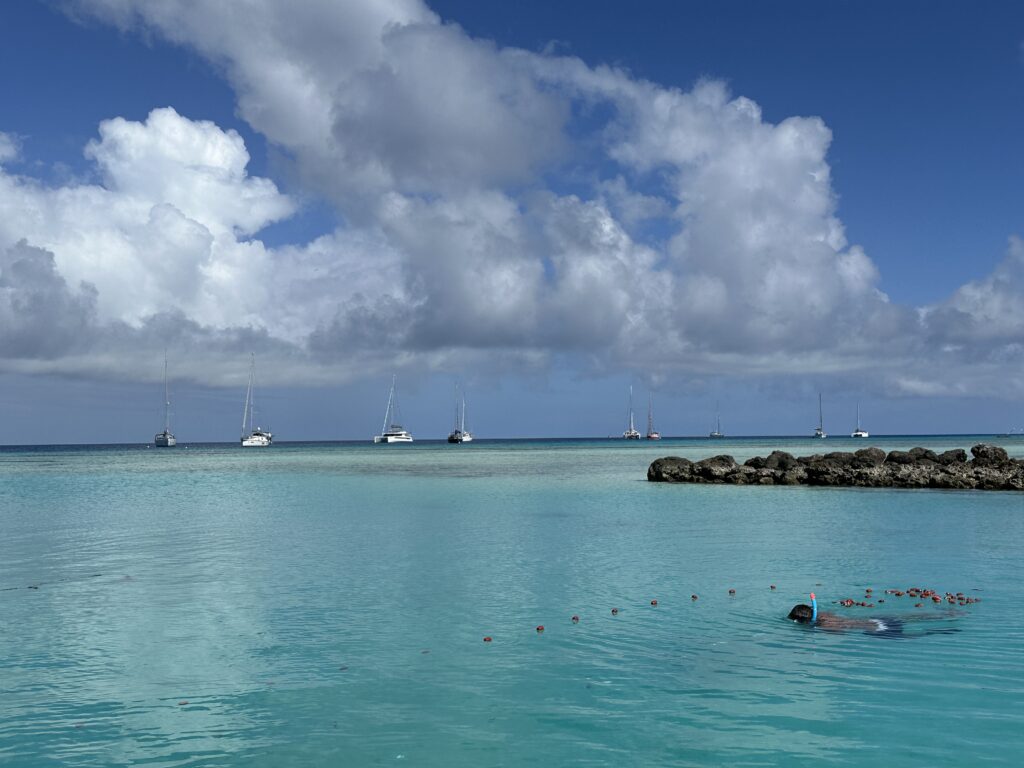
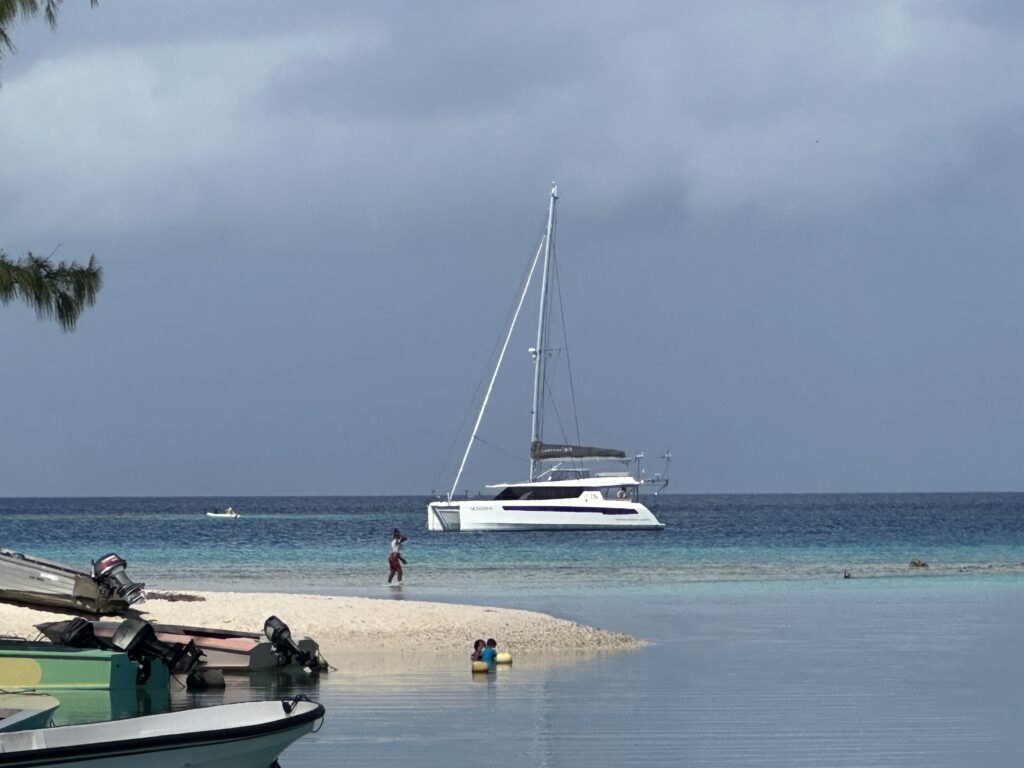
We explored the village, and everyone was super friendly. They waved and greeted us with their ‘hello’ – ‘ia ora na’.
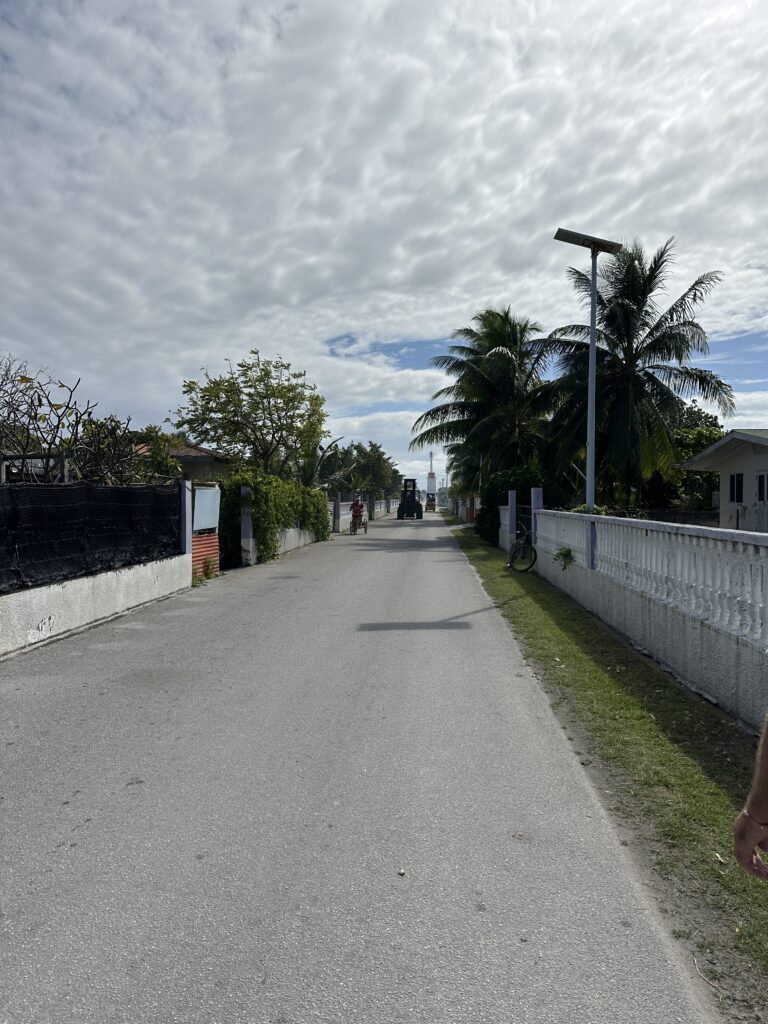
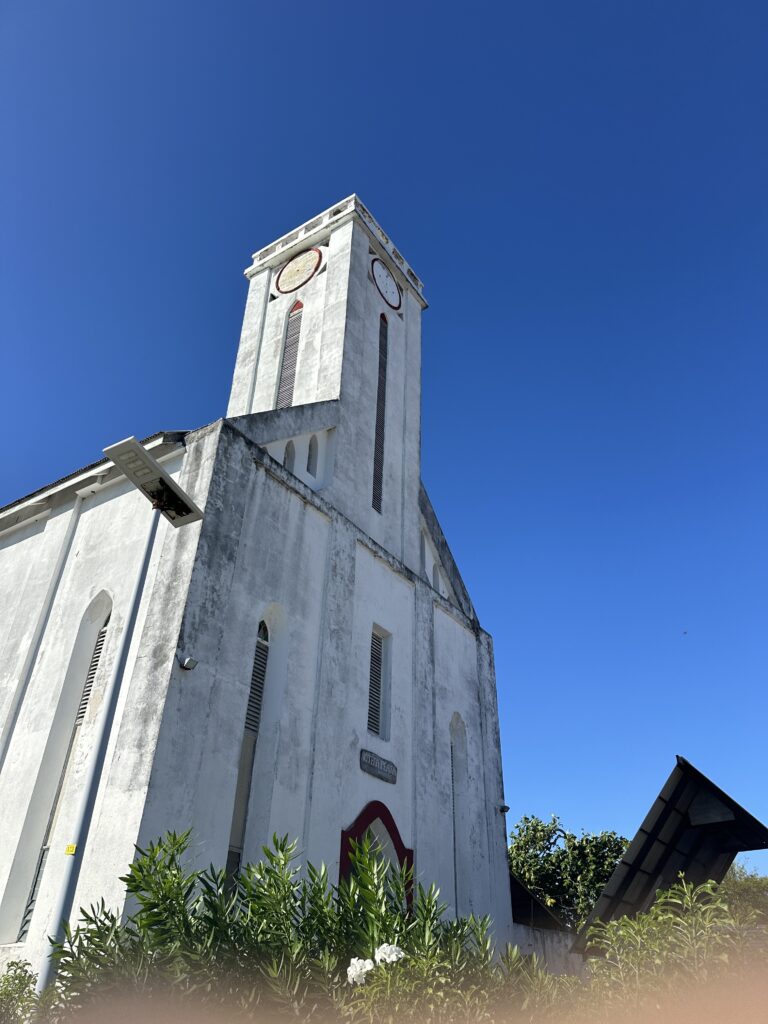
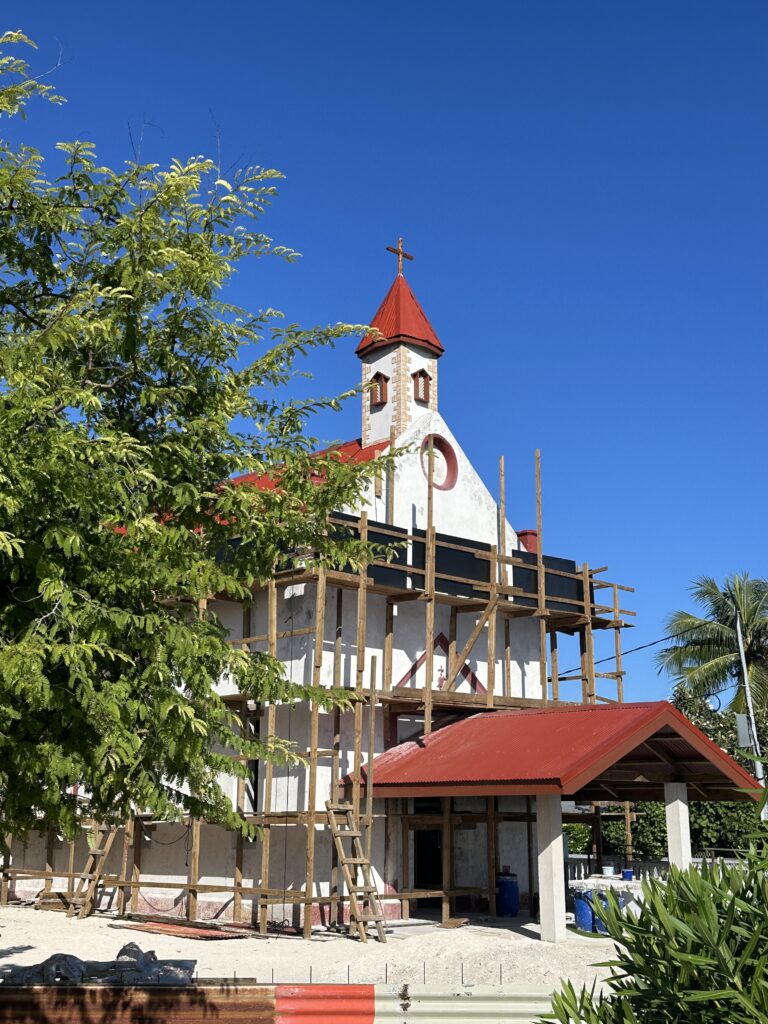
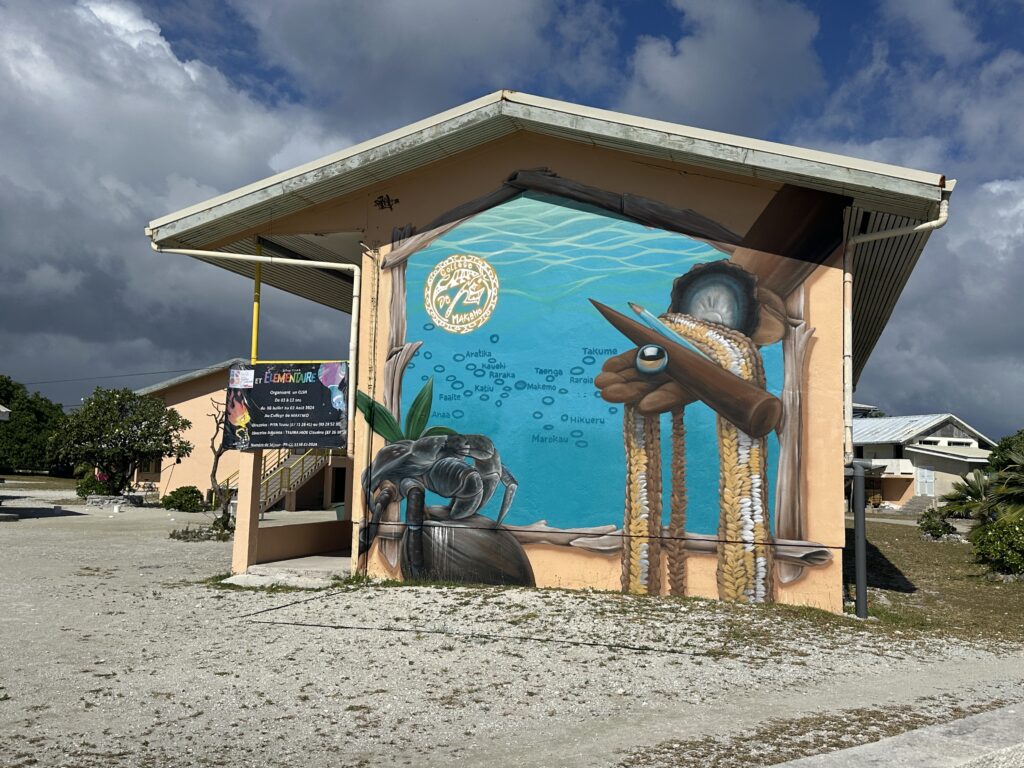
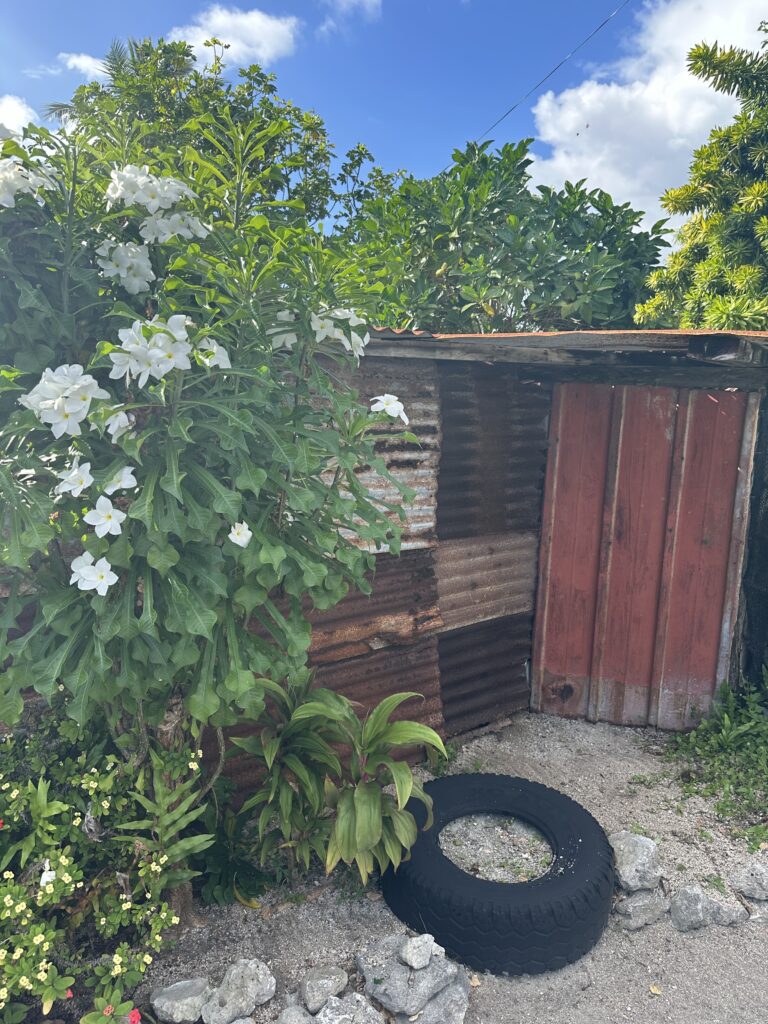
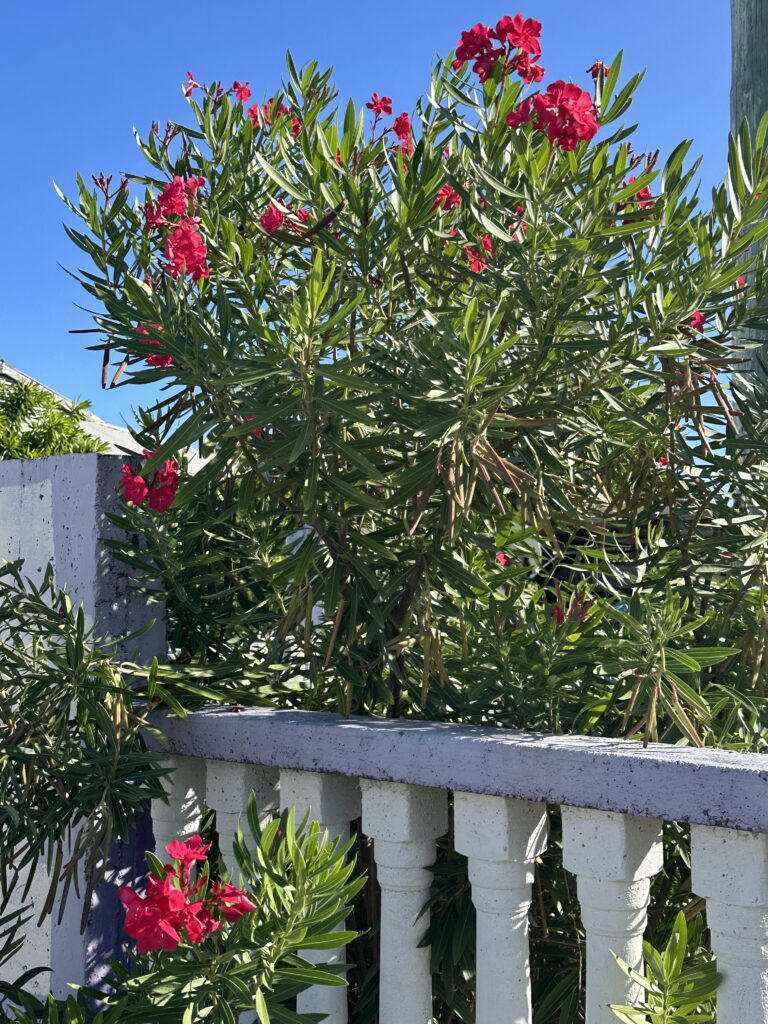
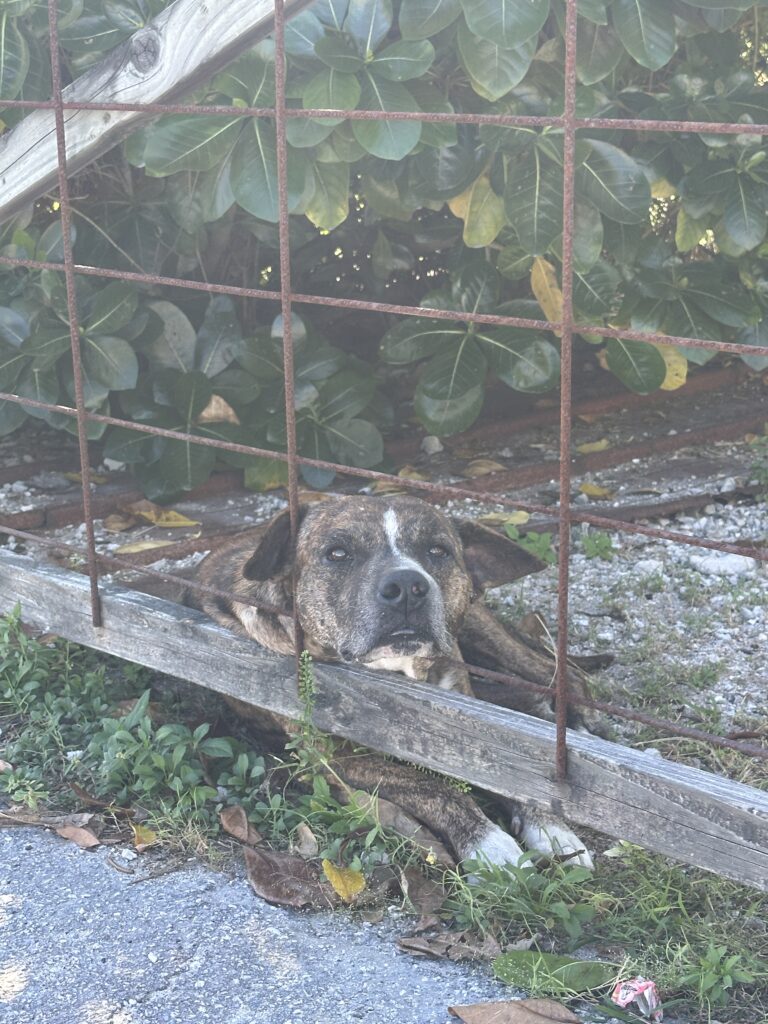
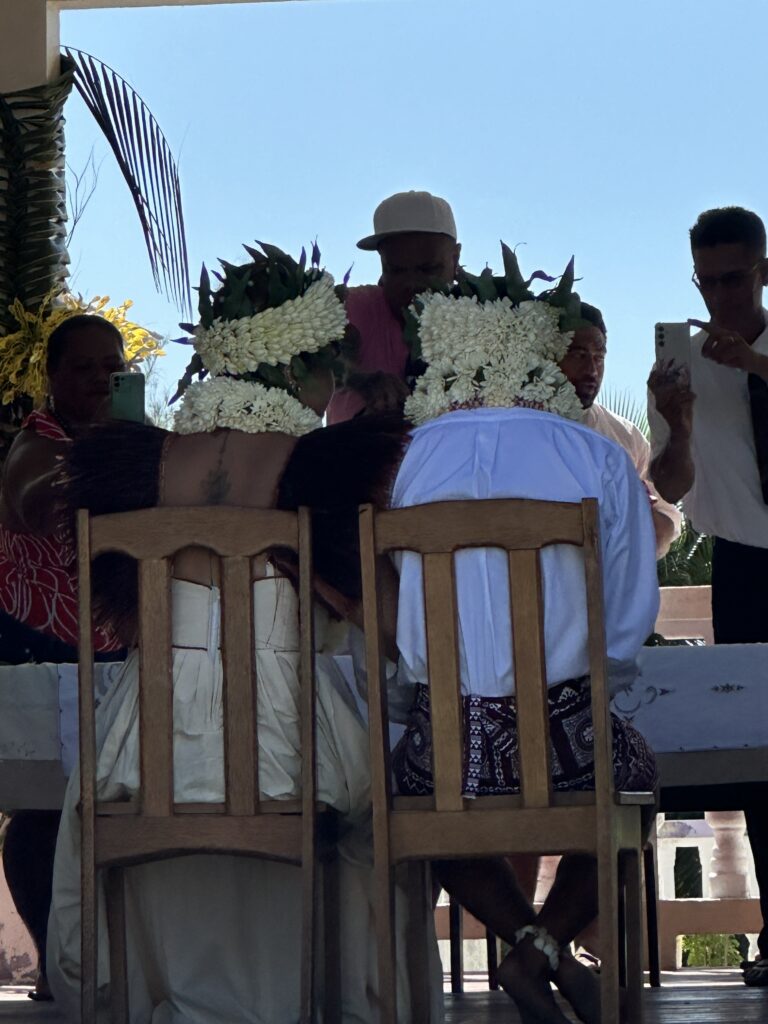
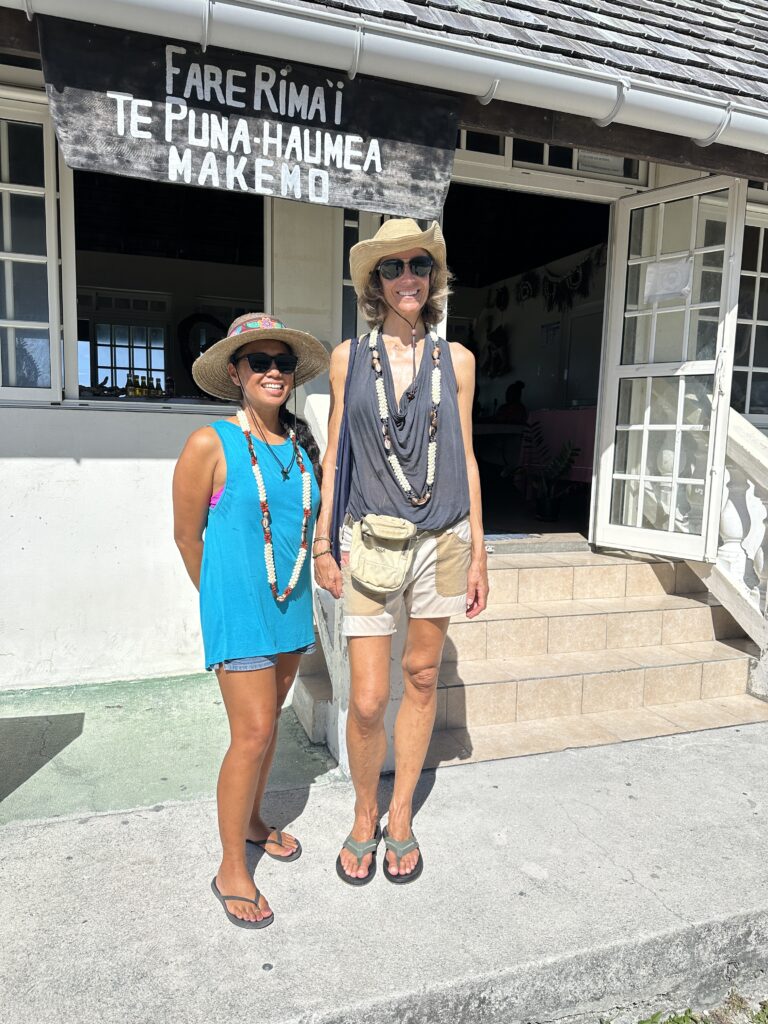
We were able to take our bikes out here, as the roads were all paved. We ended up biking all the way to the airport, which took us a couple of hours back and forth.
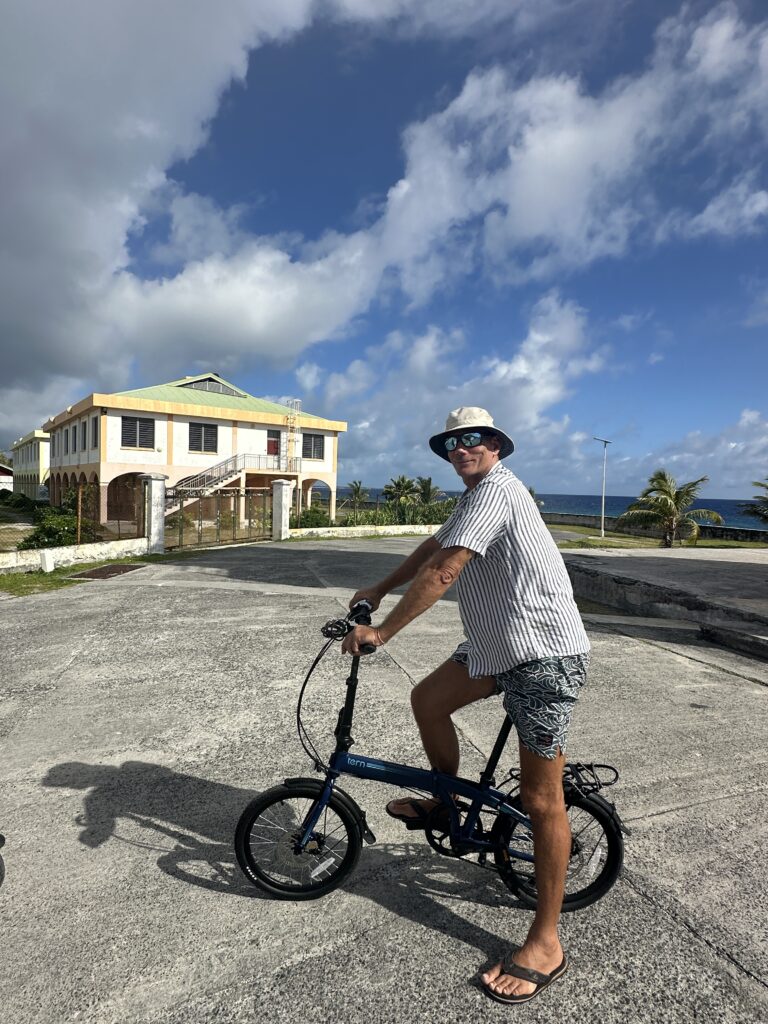
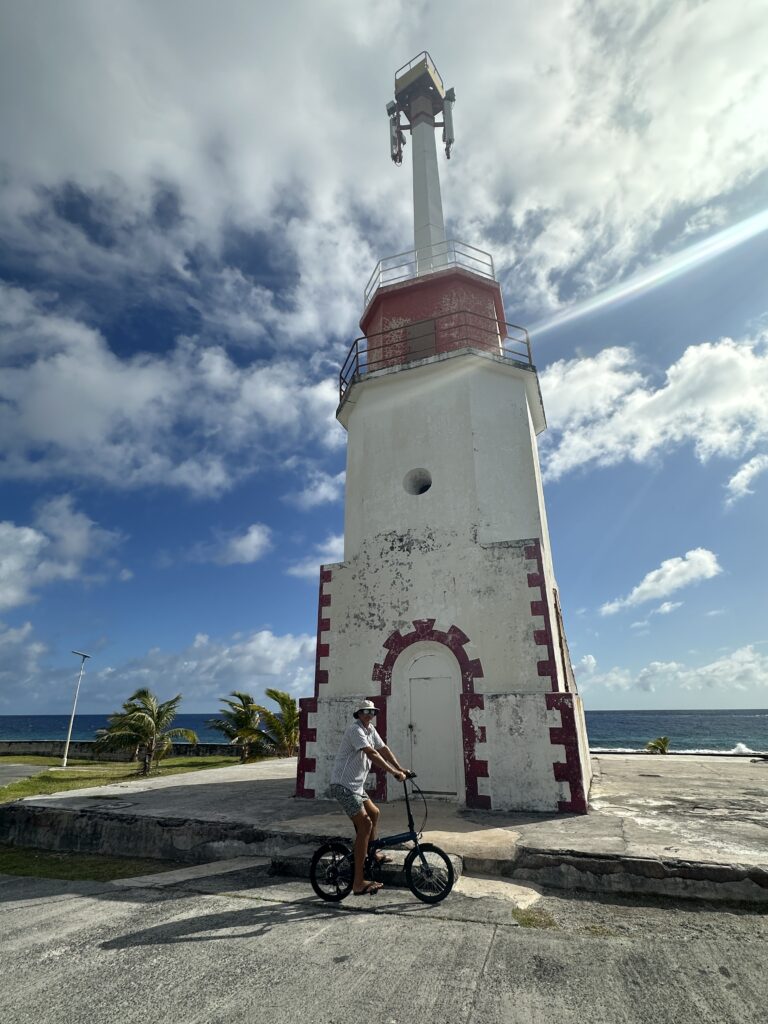
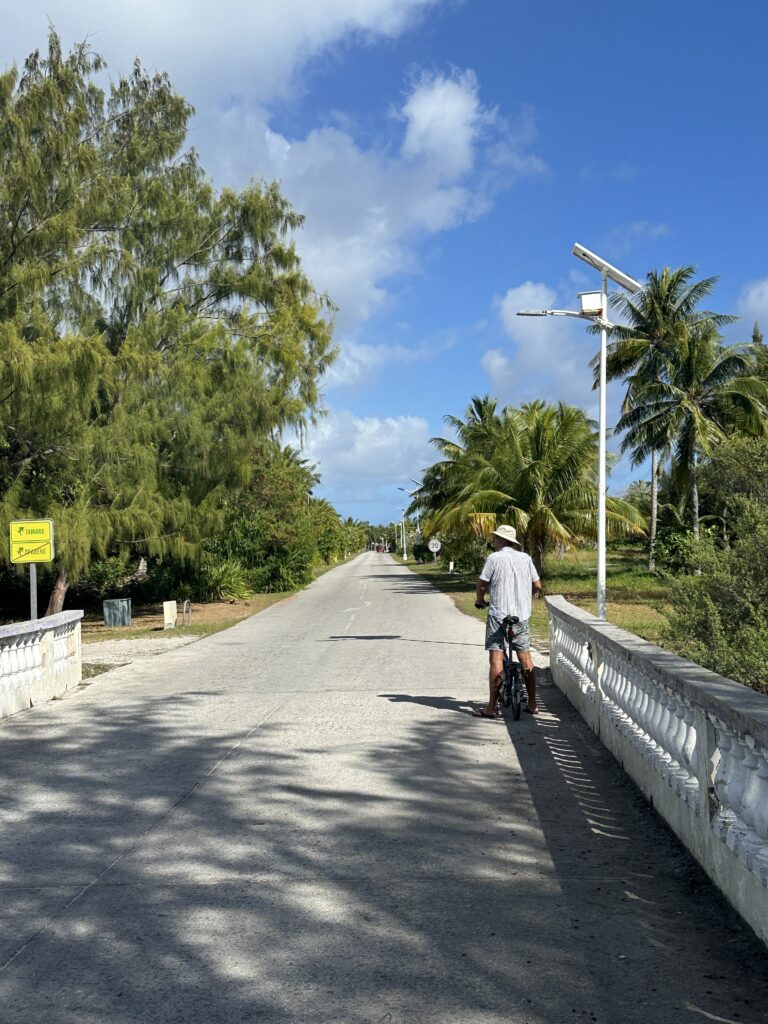
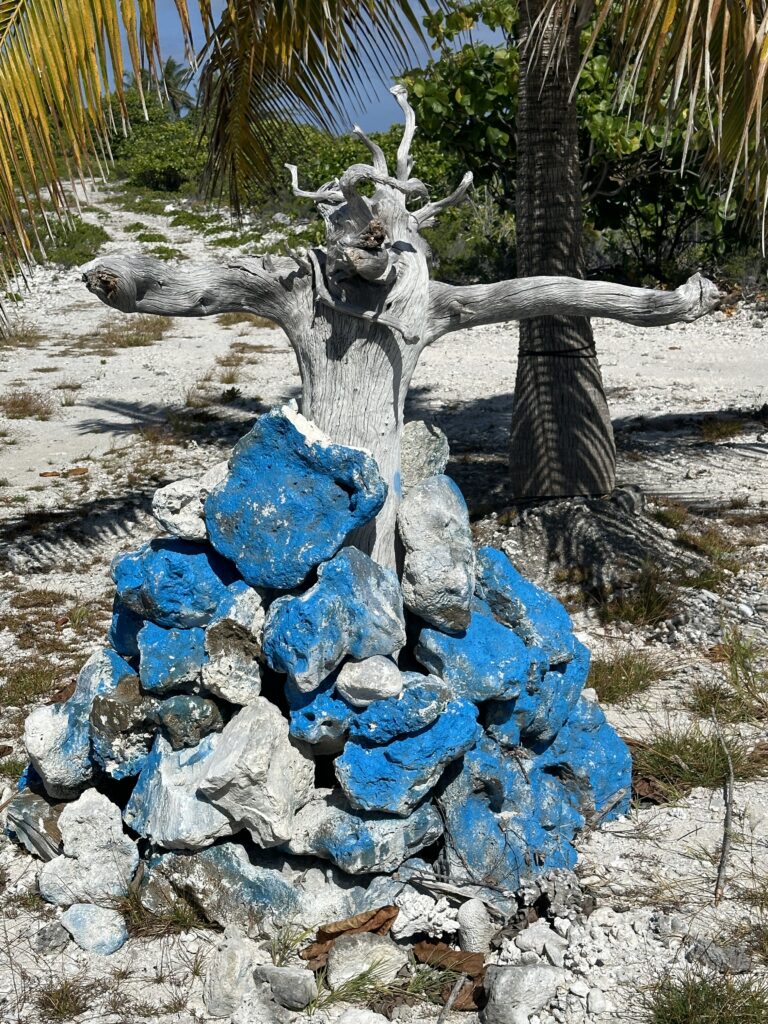
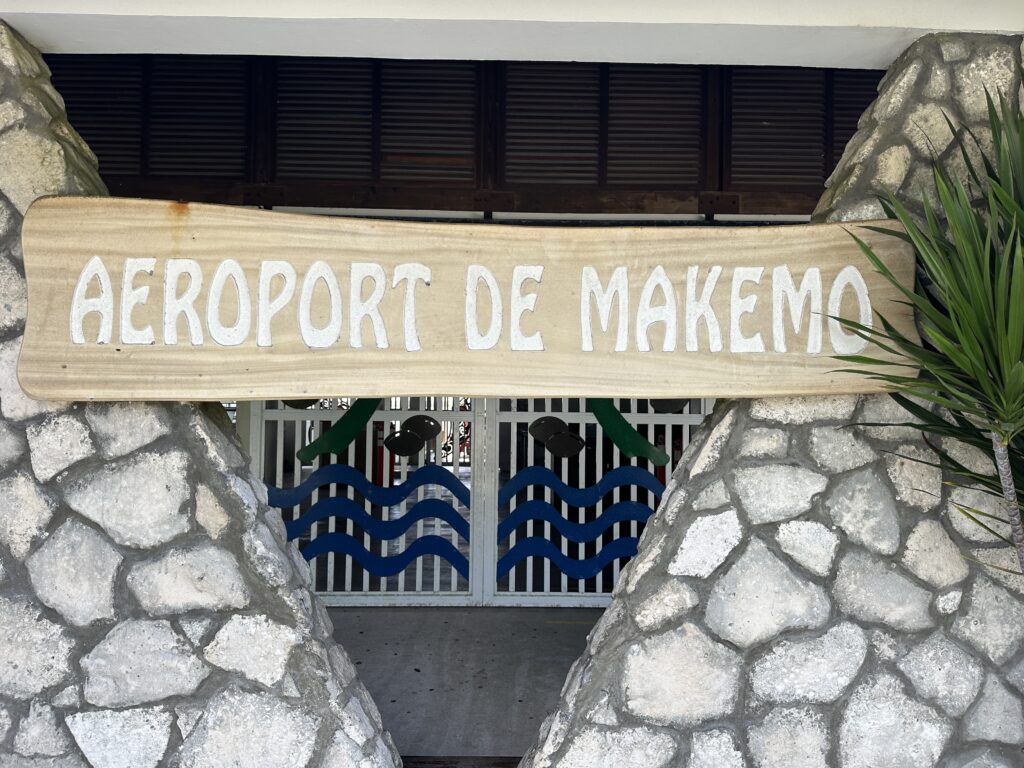
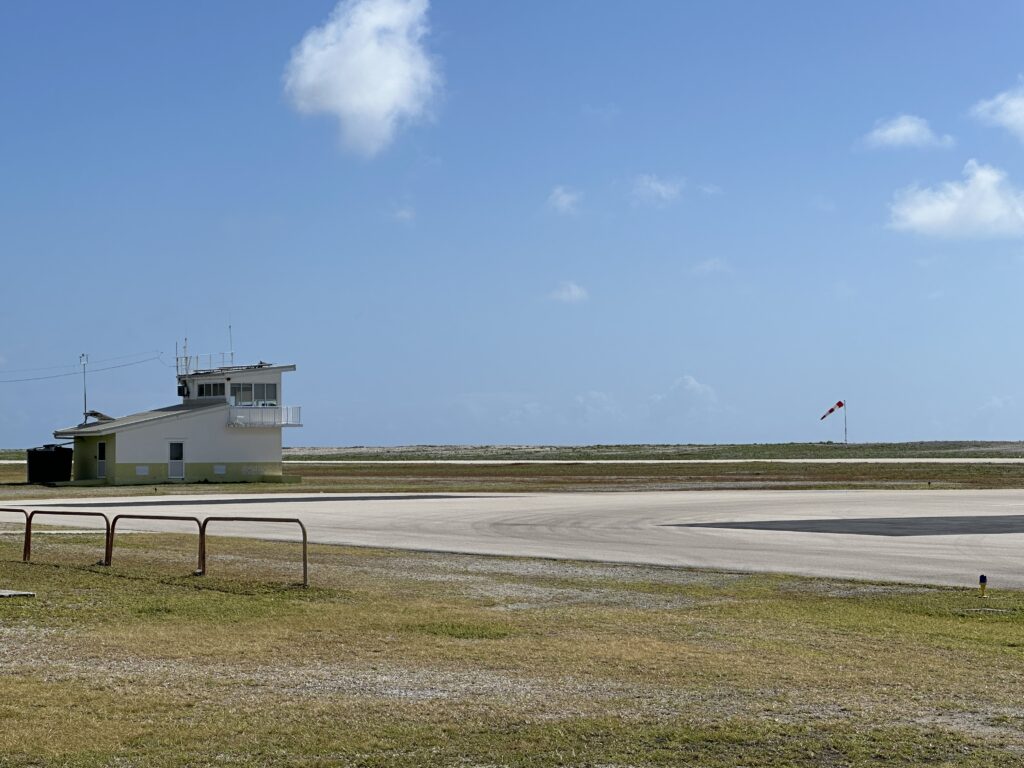
With lots of boats coming in at the same time, there is always a little bit of fighting for resources. In this atoll, the plane arrives with fresh produce Wednesdays and Sundays. By the time the vegetables and fruits are in the stores, it only takes a couple of hours before everything is cleaned out by the locals and the cruisers.
As a cruiser visiting these remote locations, we need to be as self sufficient as possible. It is a fine line between supporting the local businesses and buying too much, so the local population gets less merchandise. We were happy to find some carrot, celery, tomato, kiwi, zucchini and cucumber among the products the plane had delivered.
We dived the pass on an ingoing current, and saw lots of huge groupers, plenty of other fish and beautiful corals. As the pass is manmade, there is a distinct channel, and the best diving were on the corals just before and after the pass.
After a couple of days by the village, we ventured to the anchorage the furthest east in the lagoon. It was beautiful there, with crystal clear waters.
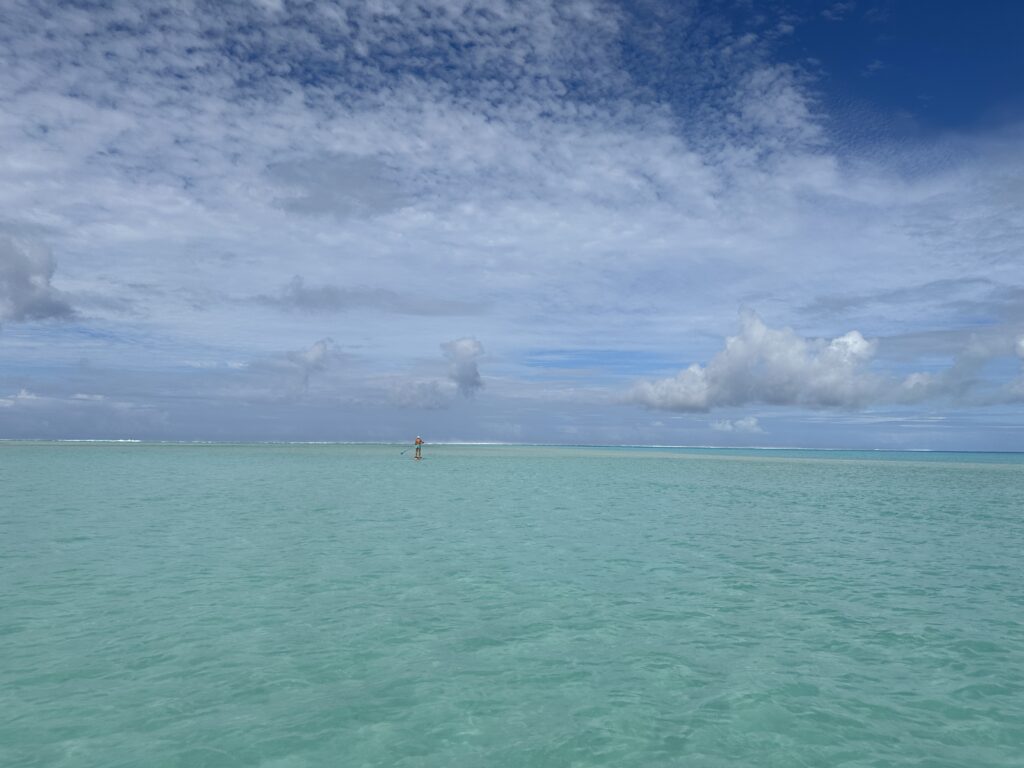
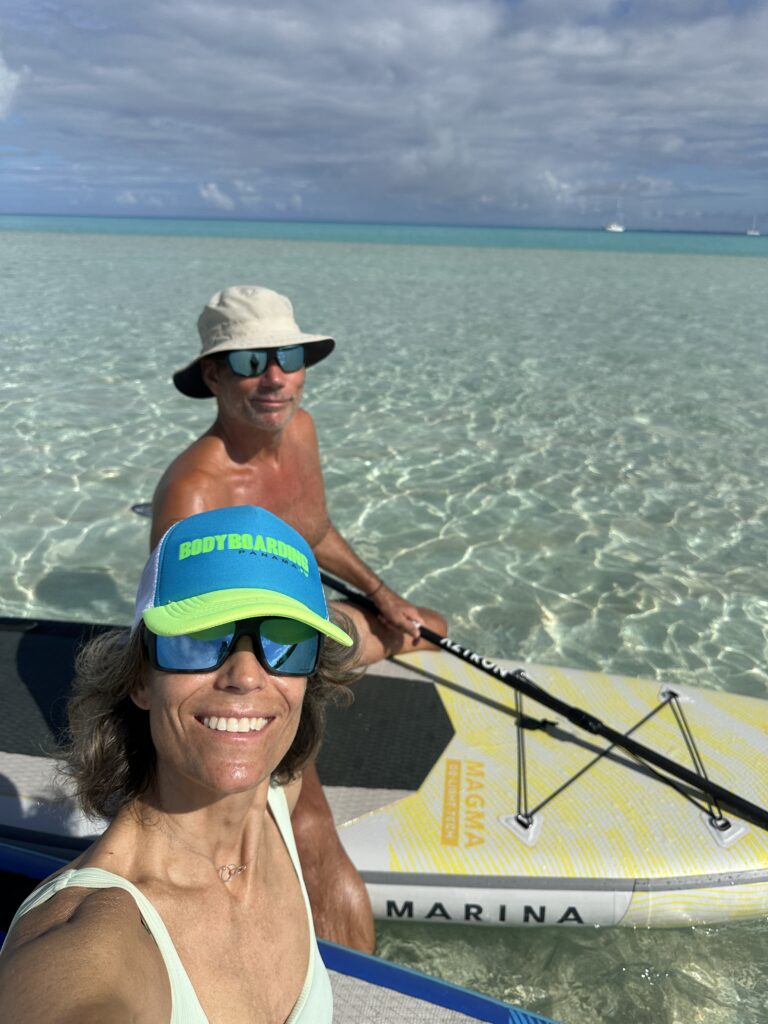

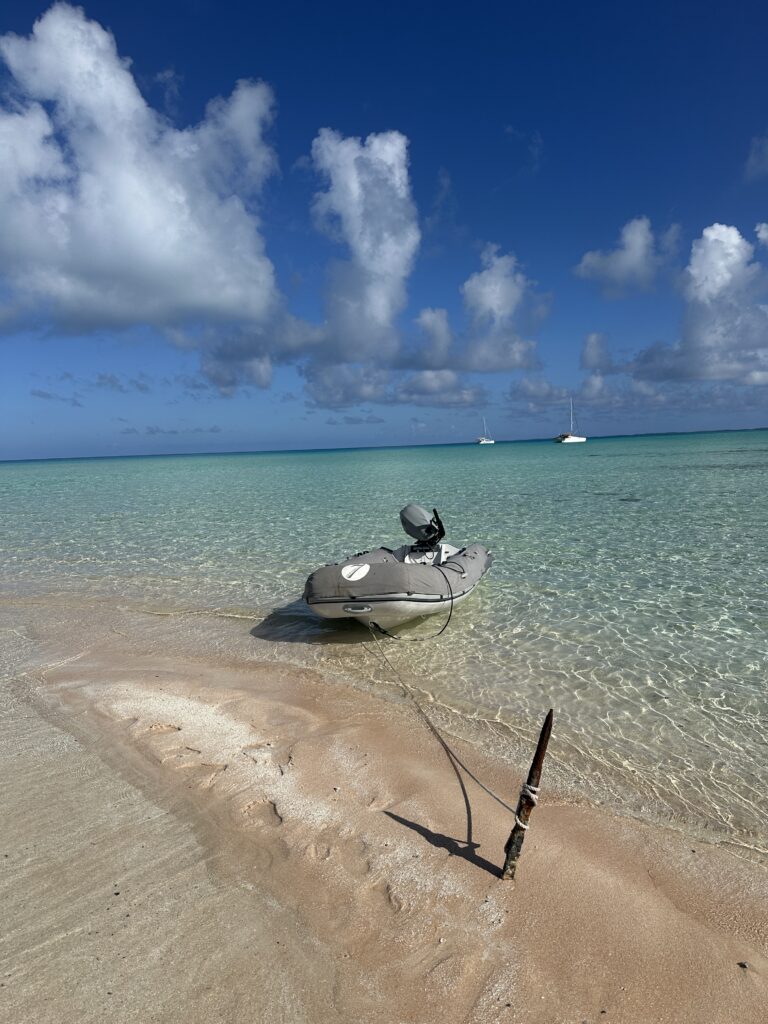
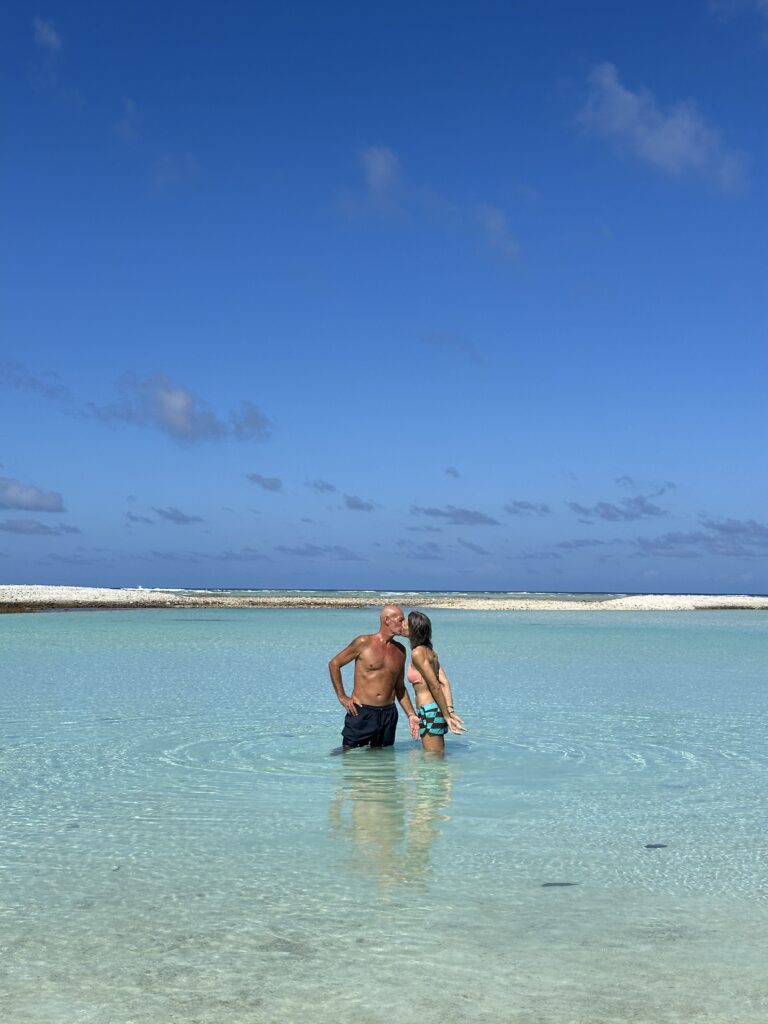
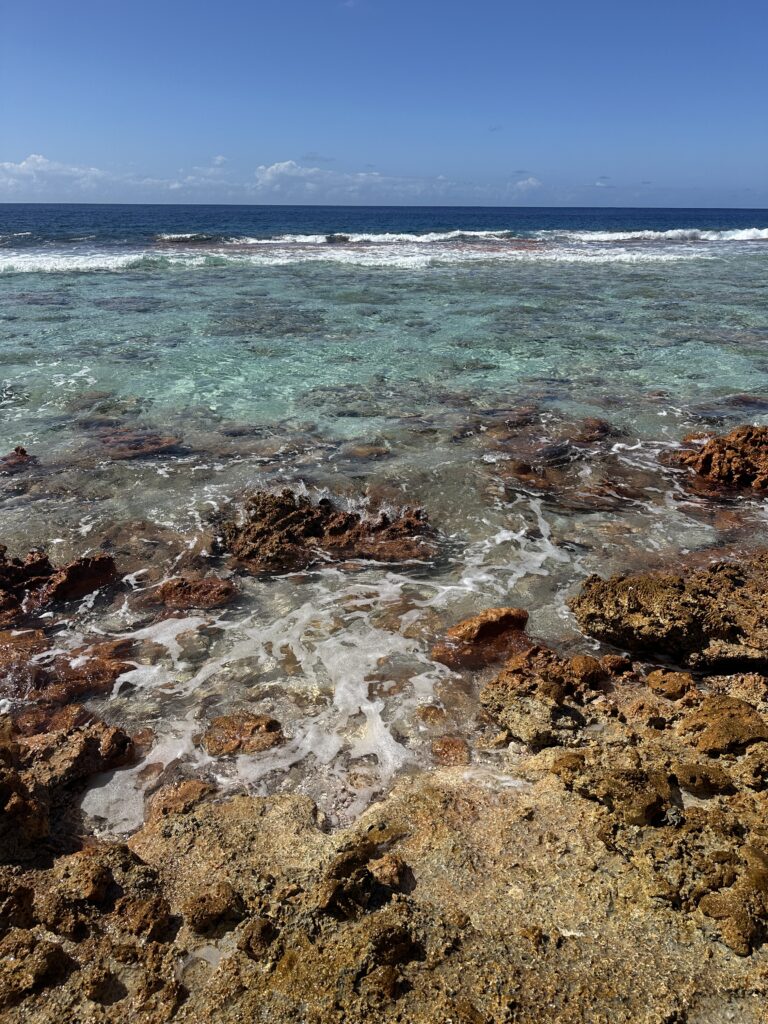
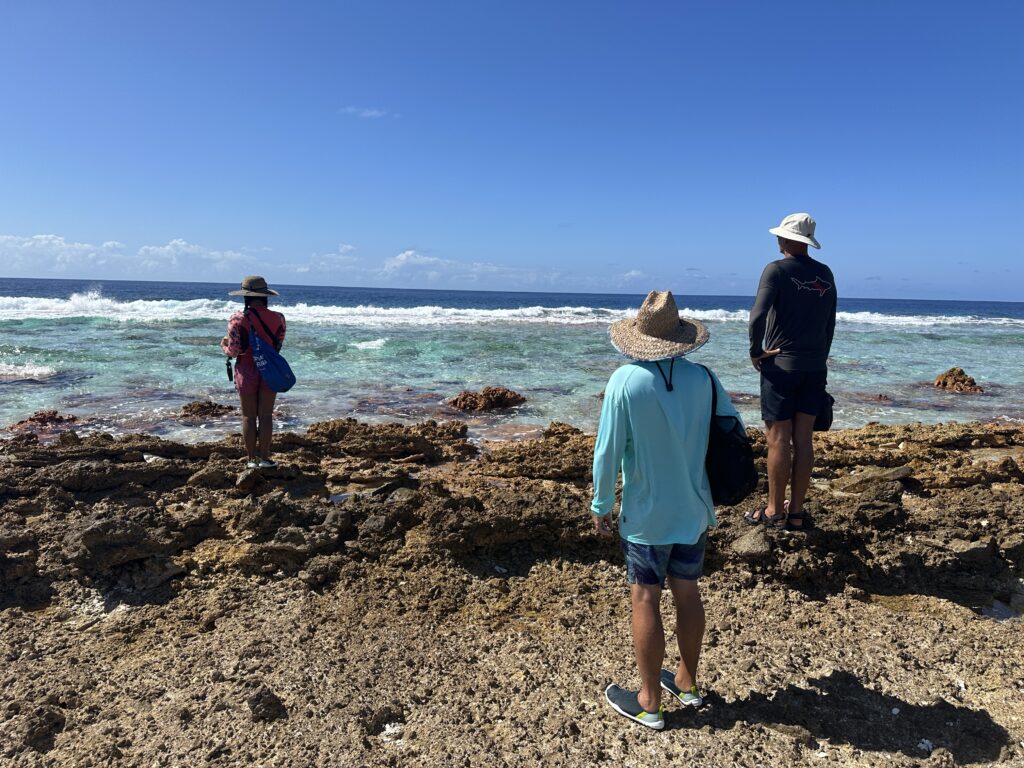
We were eight boats total on this anchorage, and our friends on SV Sauvage invited us all to a pool party. We were all invited to bring our favorite inflatable toys, and tie them to their boat. The turnout was really good, and it was such a fun and social event! We met several new cruisers and were also reacquainted with some old friends as well.
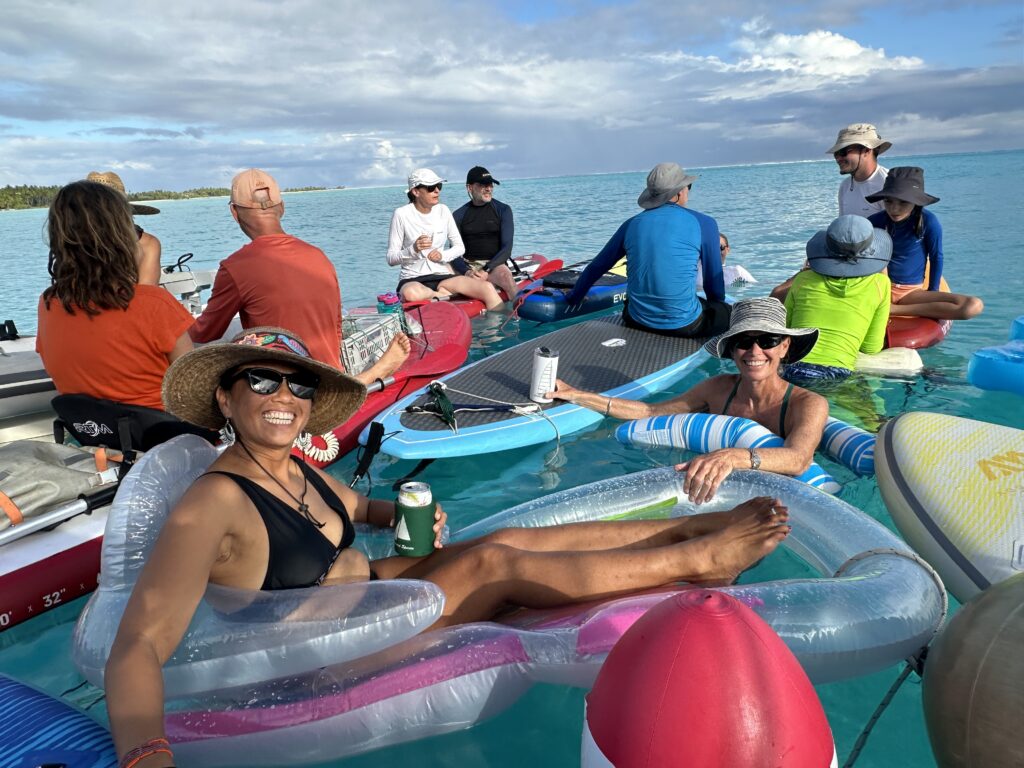
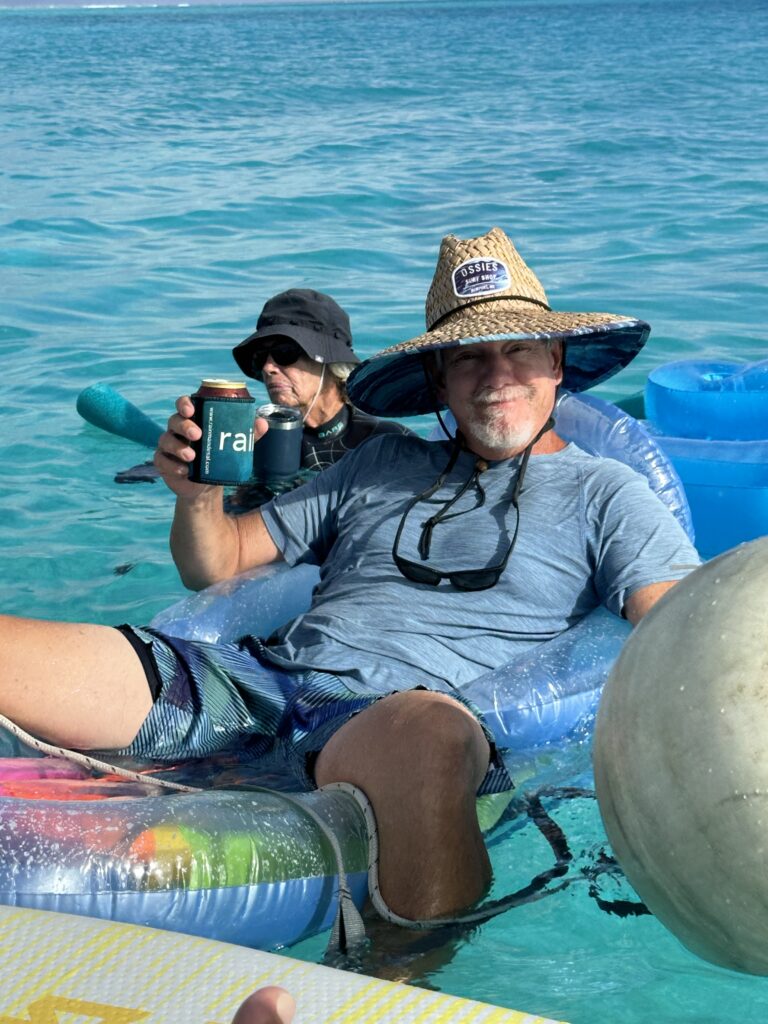
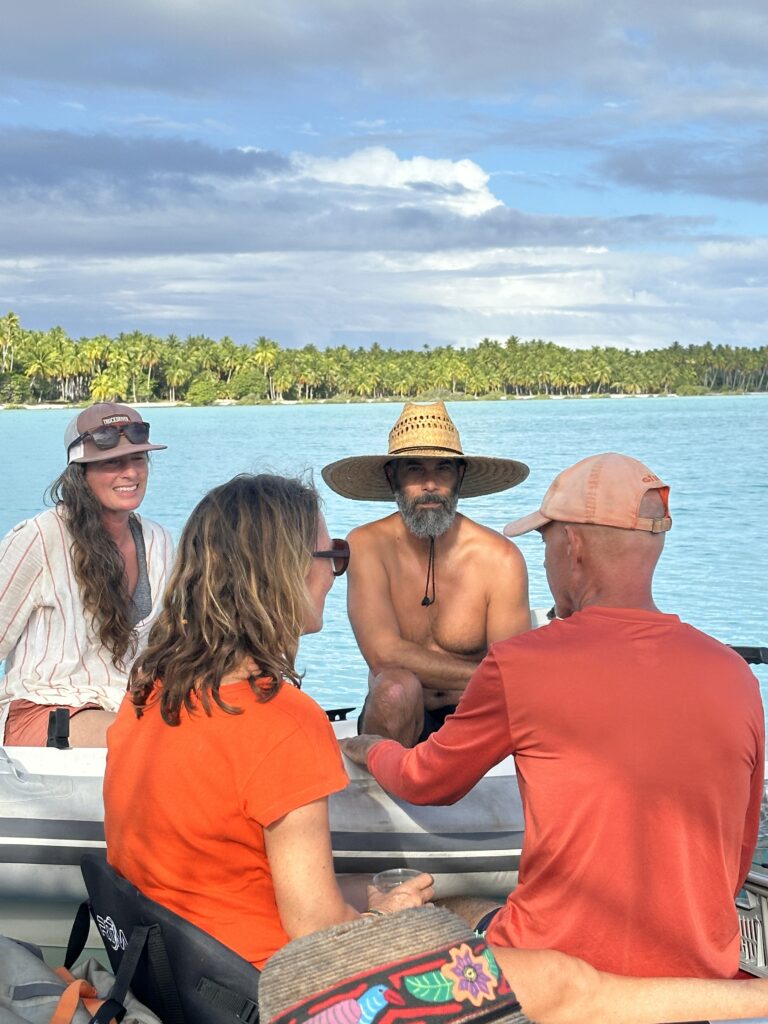
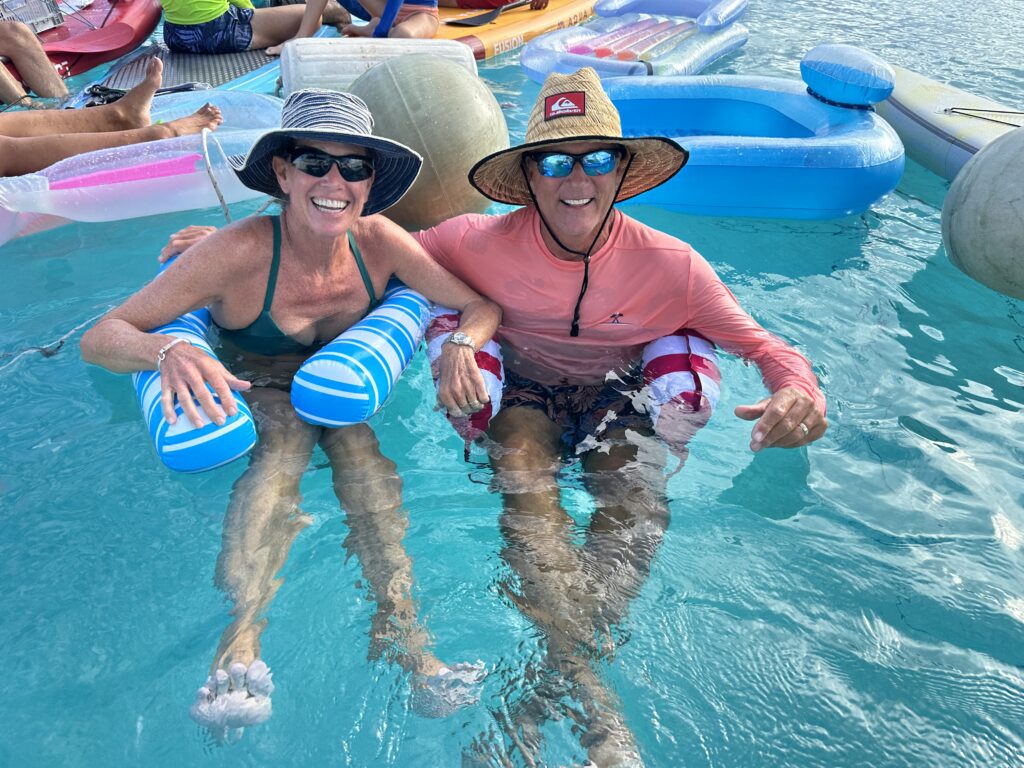
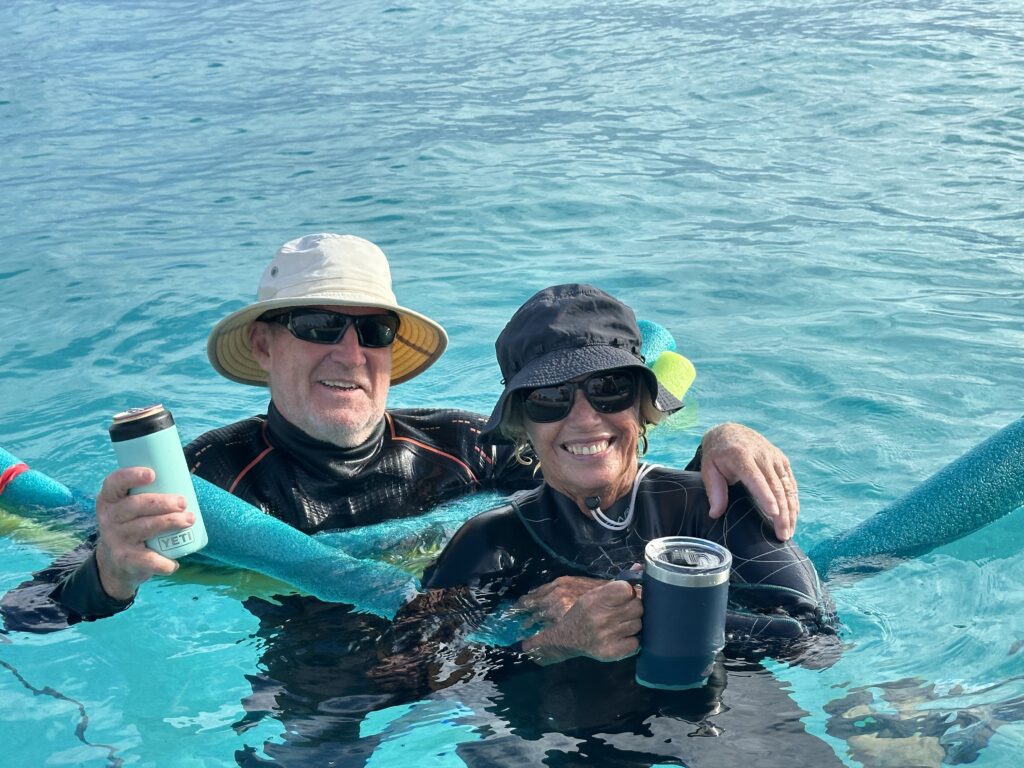
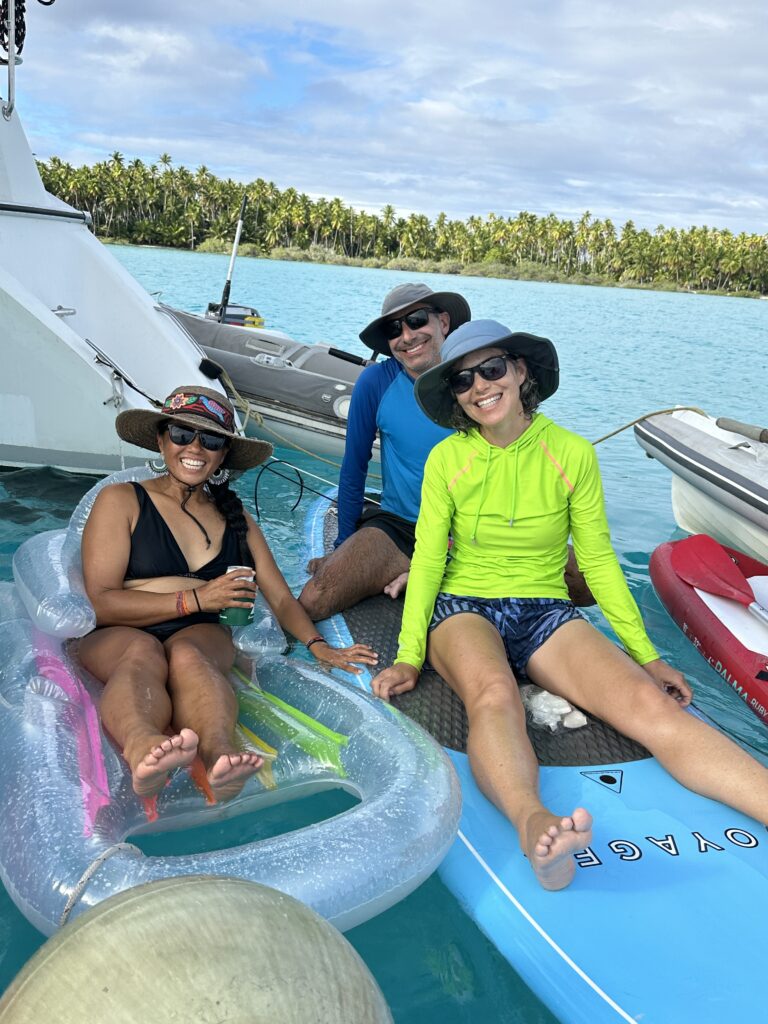
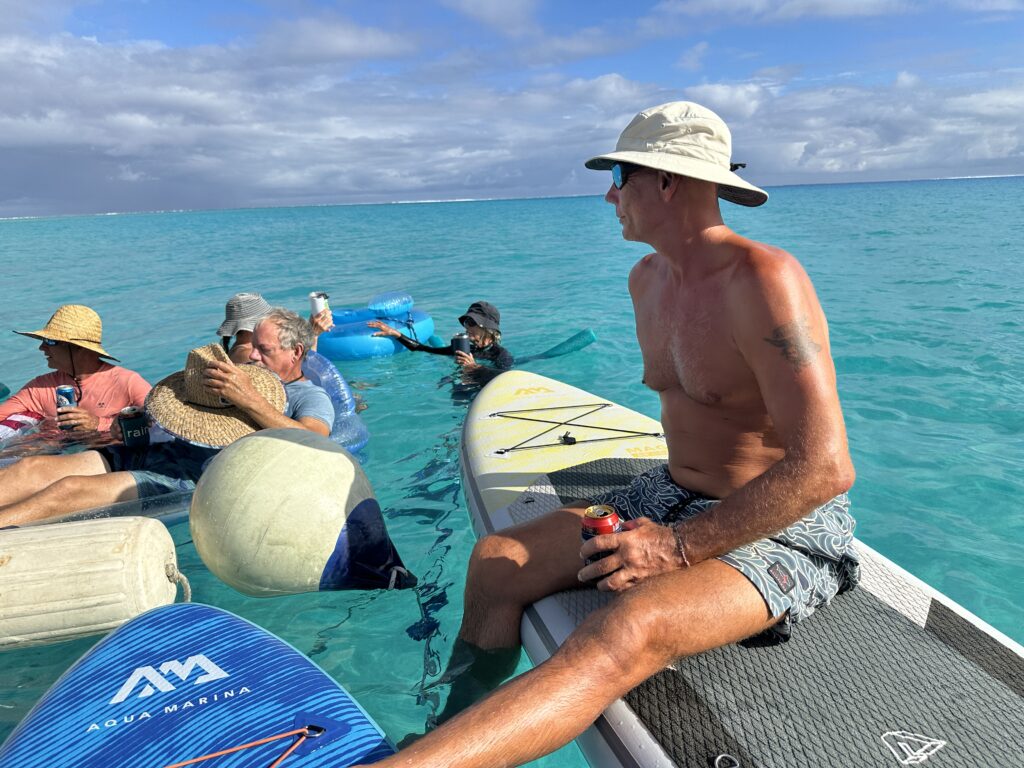
We have heard that the coconut crabs (also called robber crabs or palm thieves) here in Tuamotus are delicious, but have yet to see one. They live onshore in holes in the ground, and only come out at night. They are hard to catch, so we thought it might be a good idea to learn from the locals.
With the admiral’s school French, we were able to arrange for a crab hunting lesson with the copra (coconut that is grown, picked and dried on location) farmer Gabriel, his son Patrick and his nephew Napoleon who lived on the nearby motu (islet).
The guys were so hospitable. They first taught us how to make bait for the crabs. Basically, they use half of the coconut, and ties it to a branch. This way, the crab can’t run away with it. We placed the bait around on the island, mostly near vegetation.
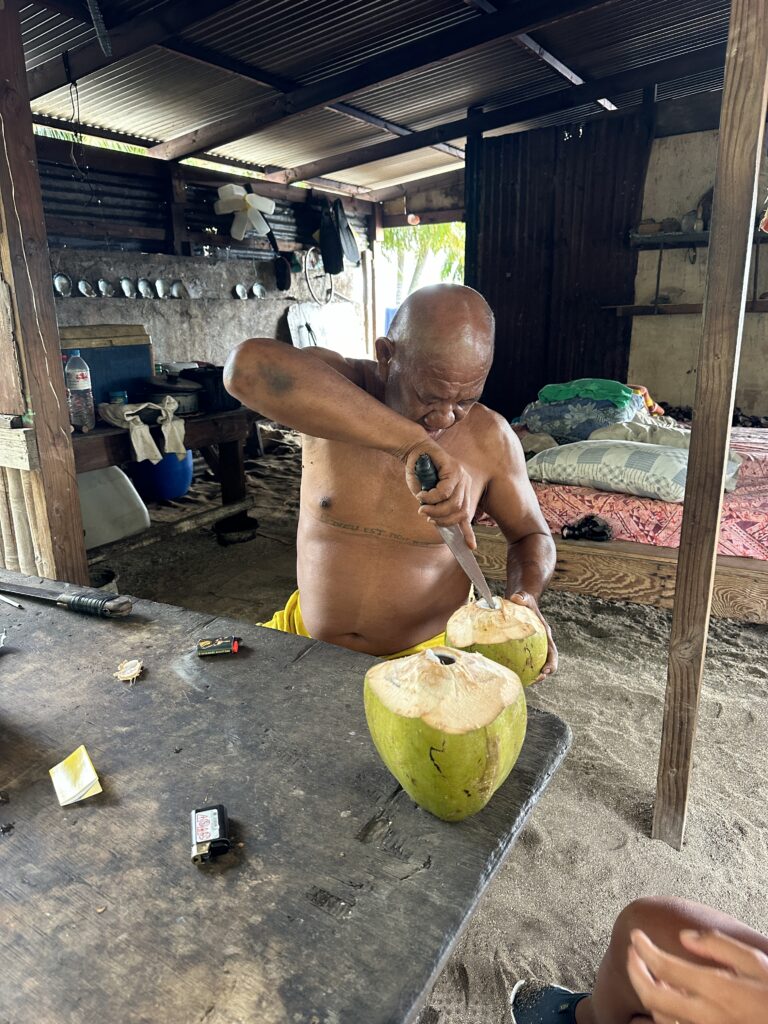
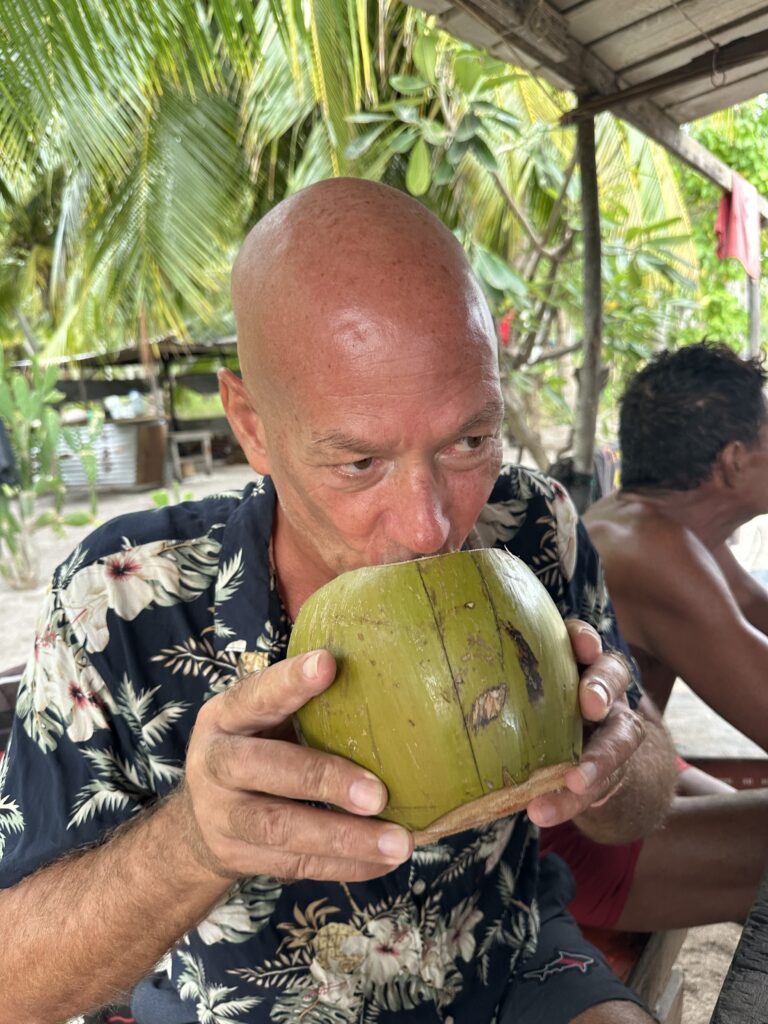
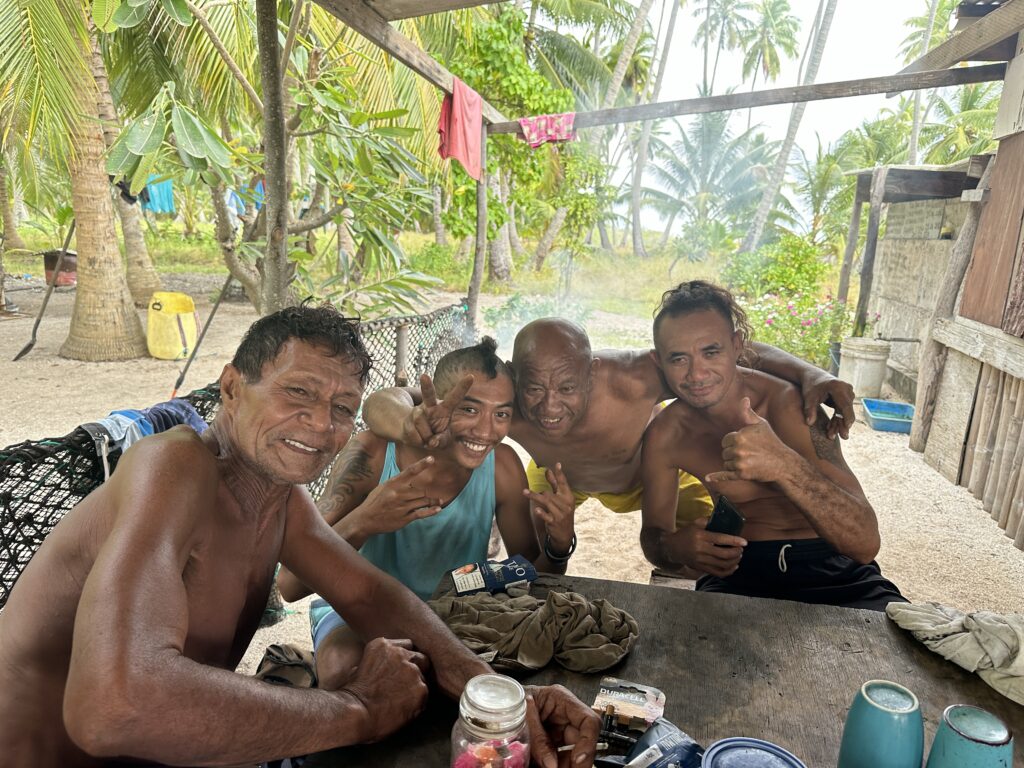
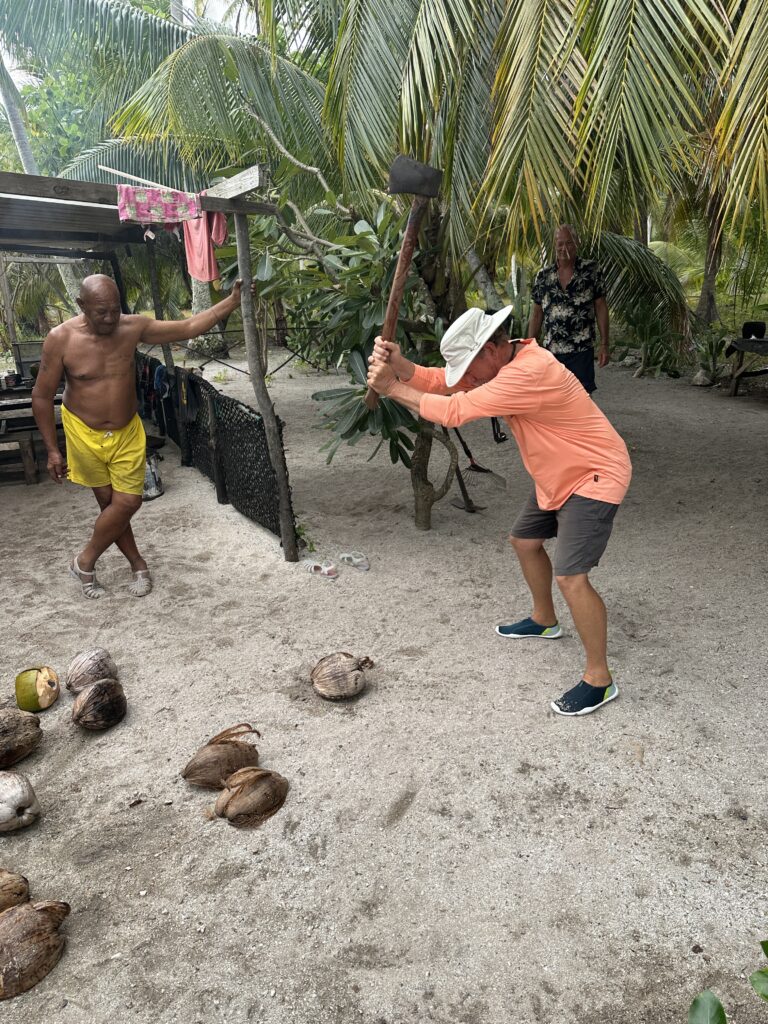
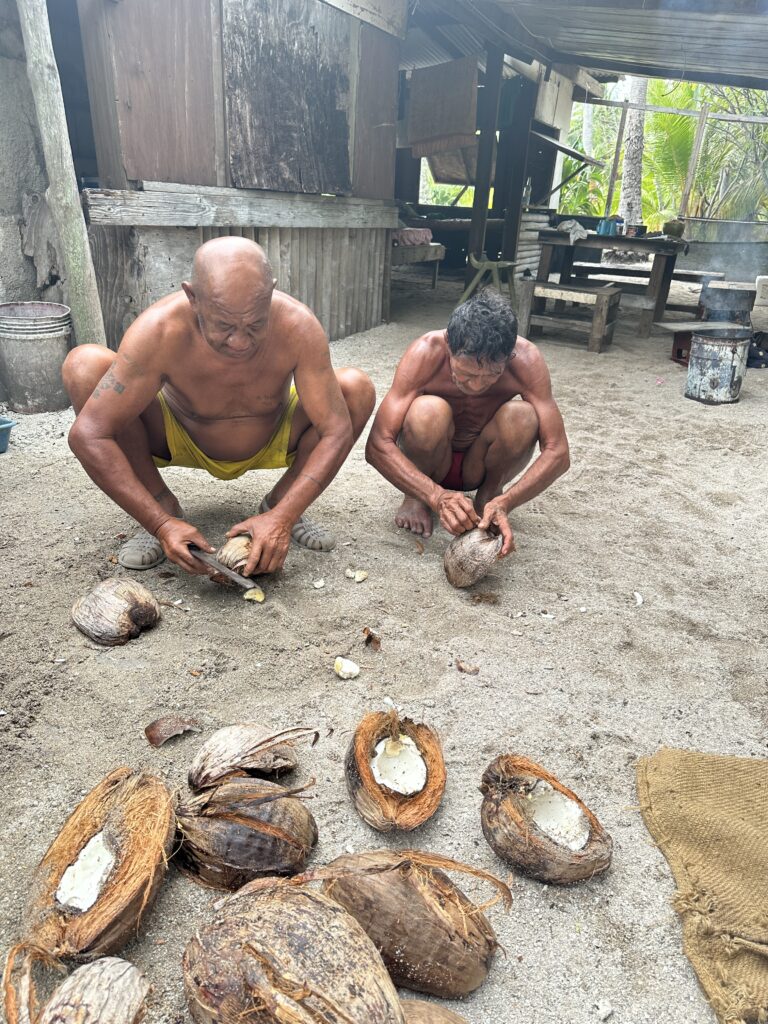
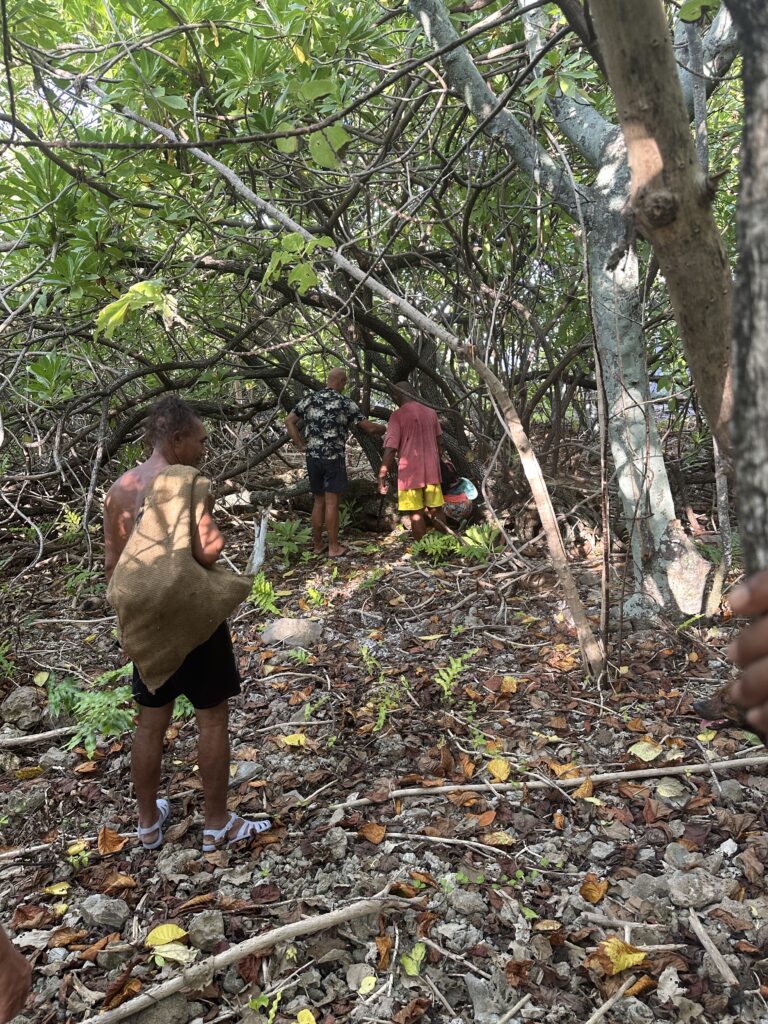
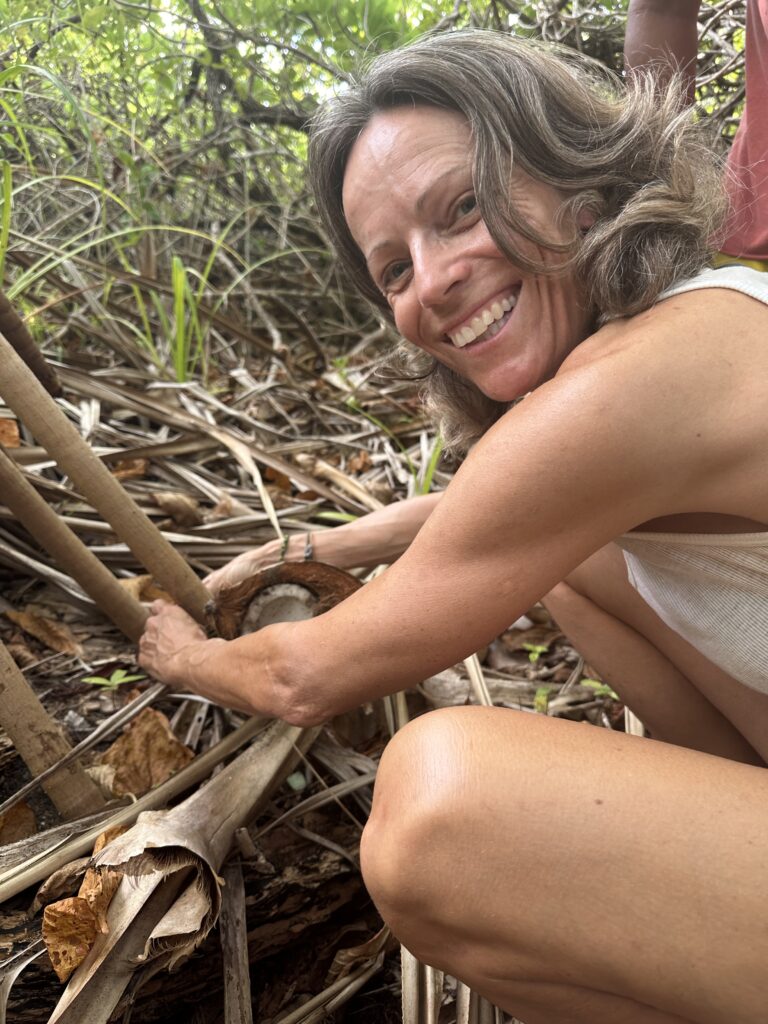
Then, we waited for the dark to come before we sought out the areas where we had placed the traps.
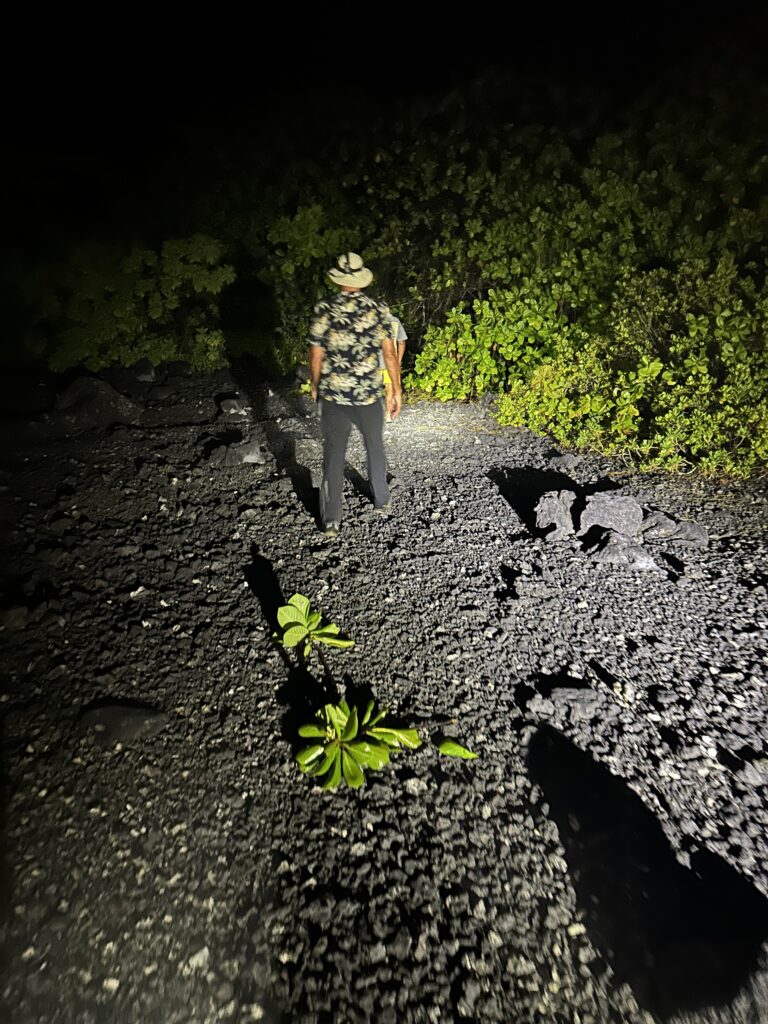
It is not really the right season for these crabs, as they shed their shell now, and seldom come out of their holes. Therefore, our expectations were low in terms of catching many. Big was our surprise when we ended up catching nine crabs! It turned out that one crab per person was enough, so we had dinner for the four of us for a couple of days.
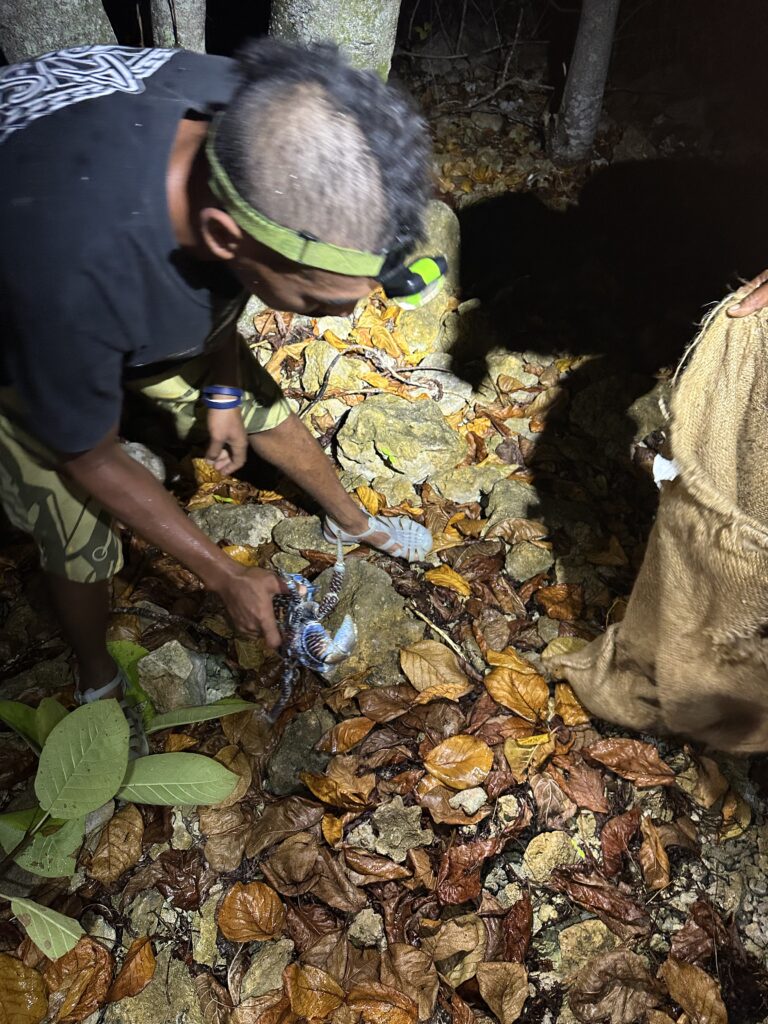
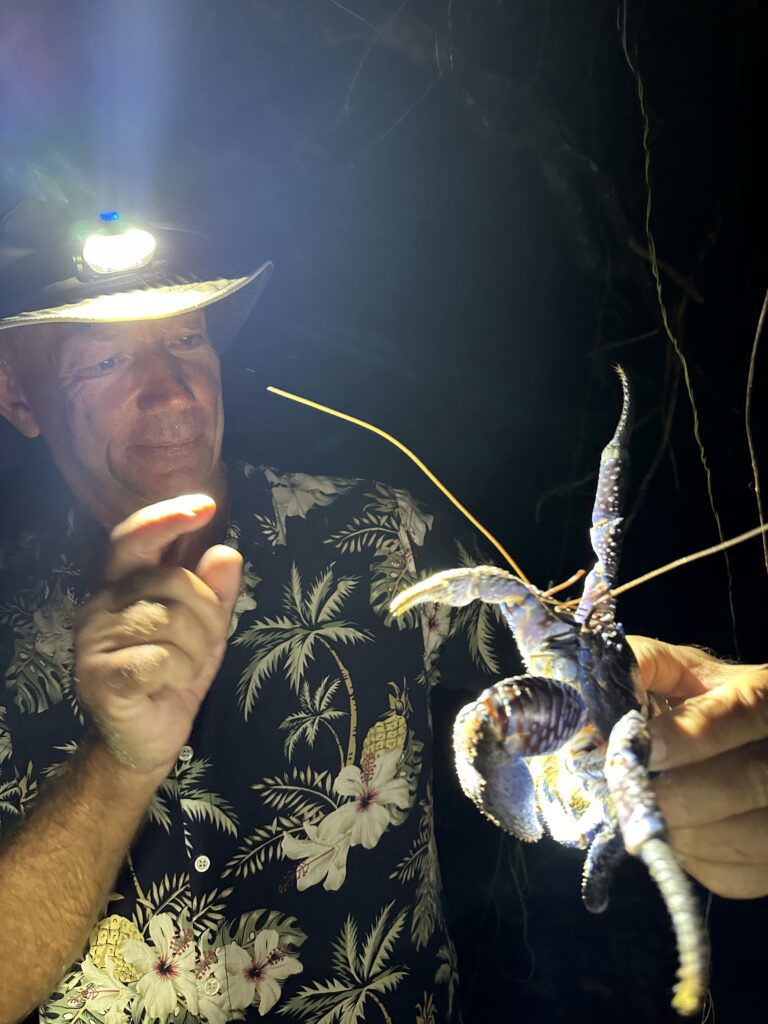
The captain did an awesome job both hunting and preparing the crabs on the boat. Getting the crabs out of the sacks were we had trapped them, was not an easy task. Considering these crabs can easily take your finger off with their powerful claws, it was not an easy task.
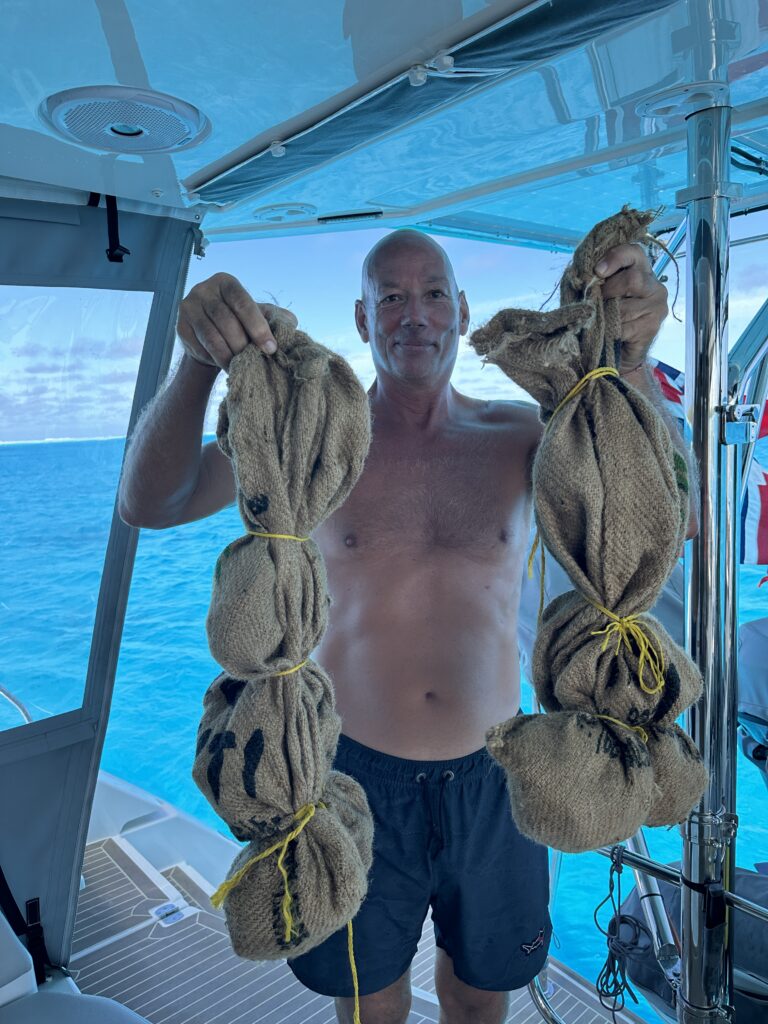
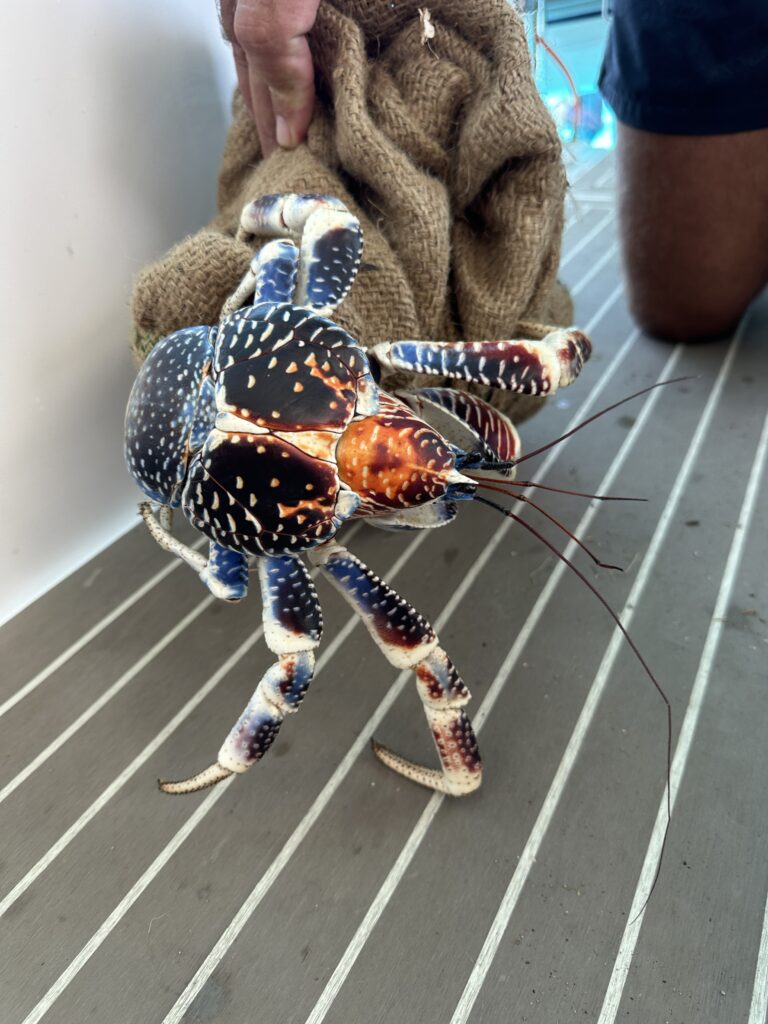
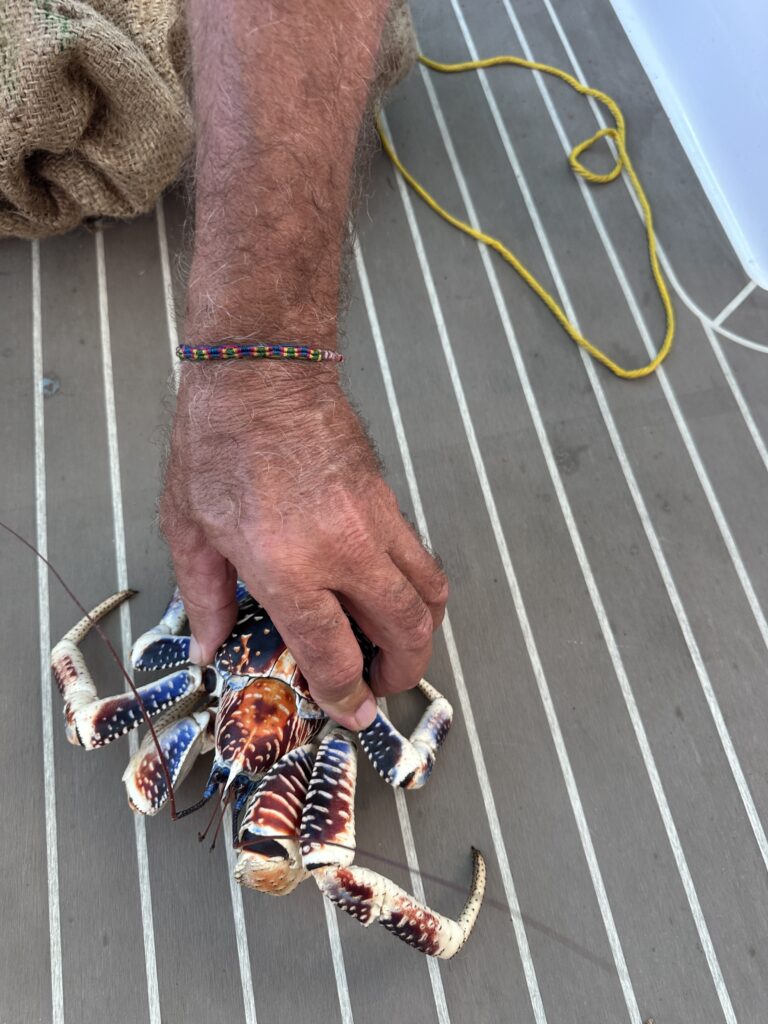
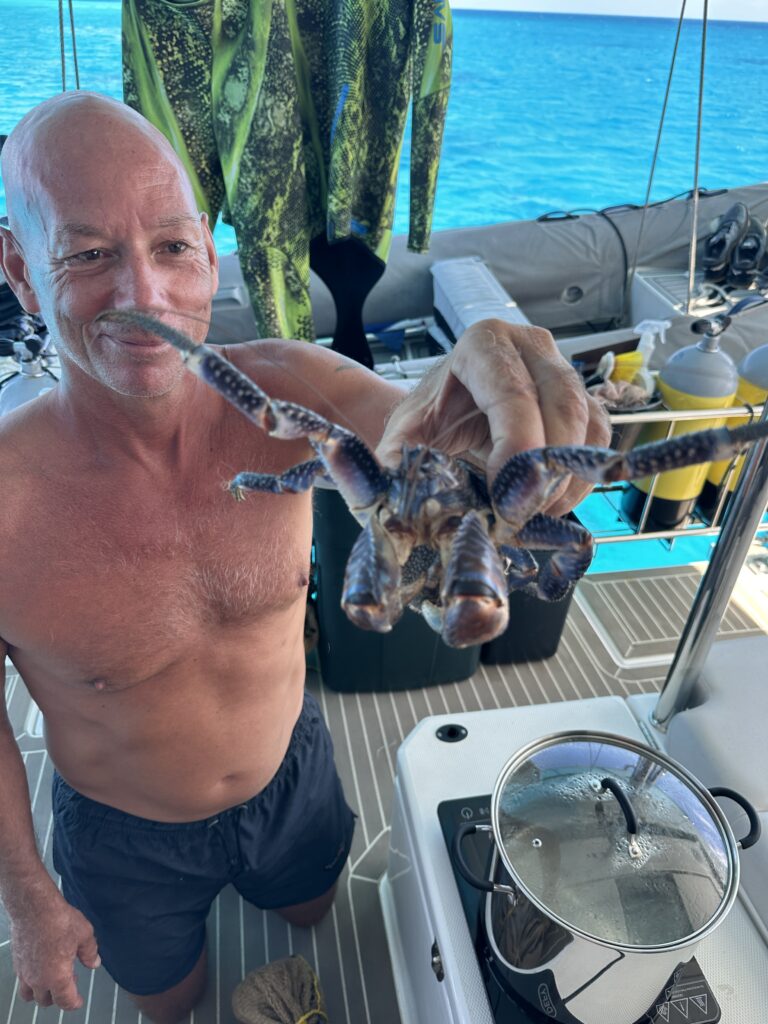
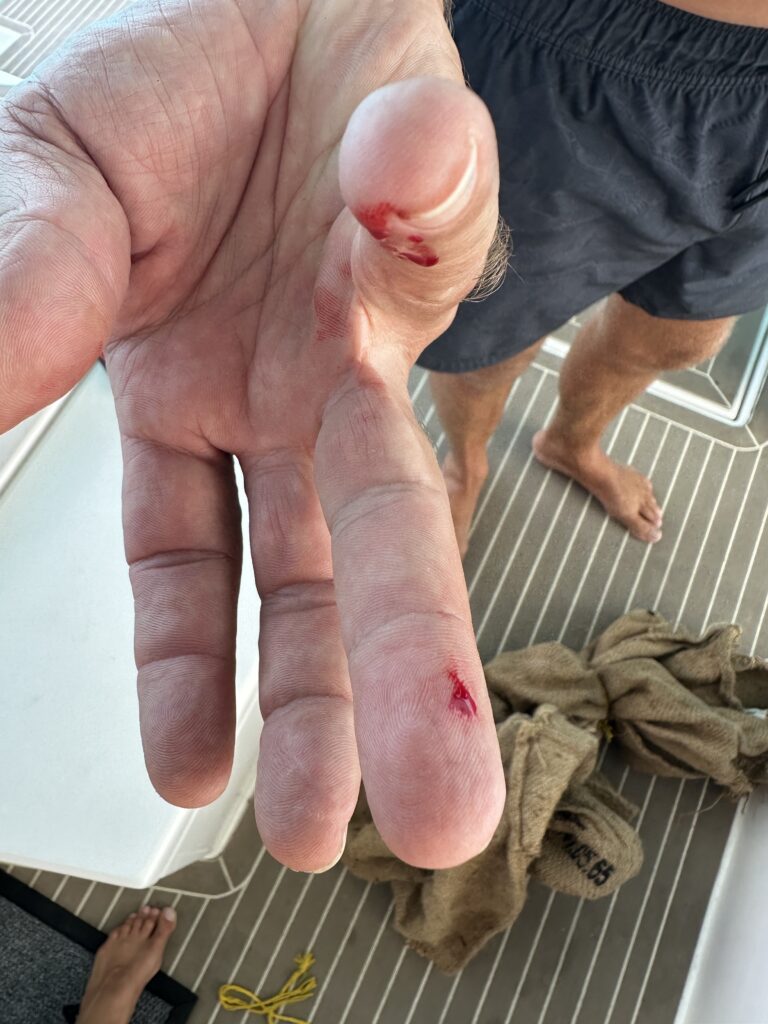
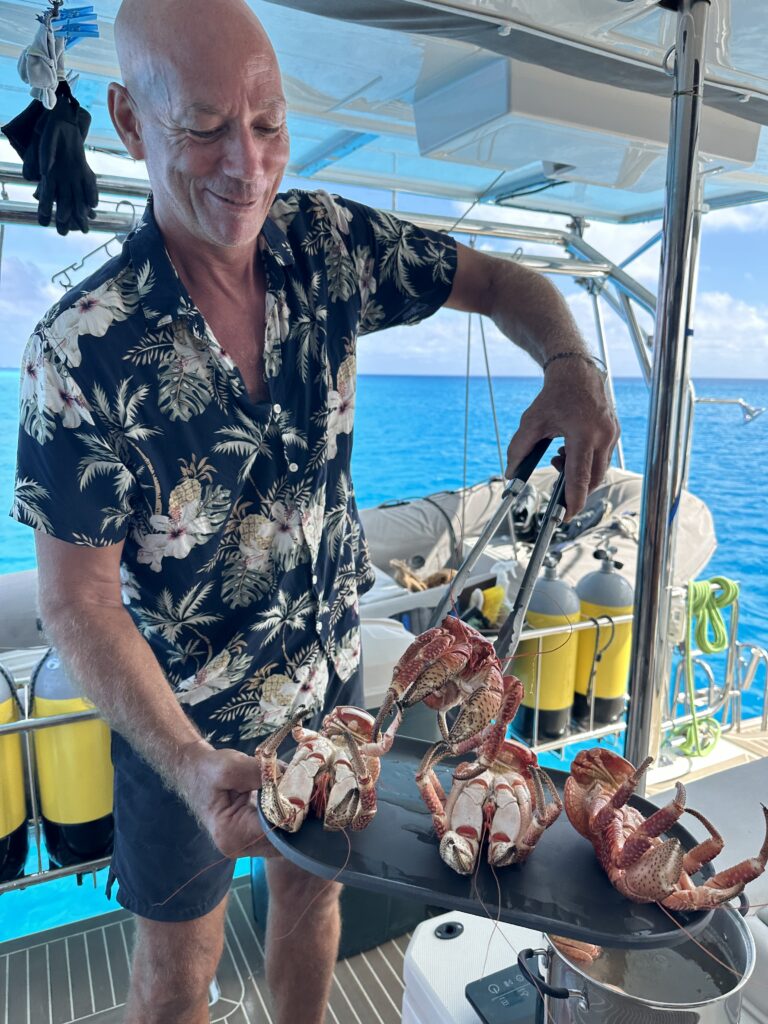
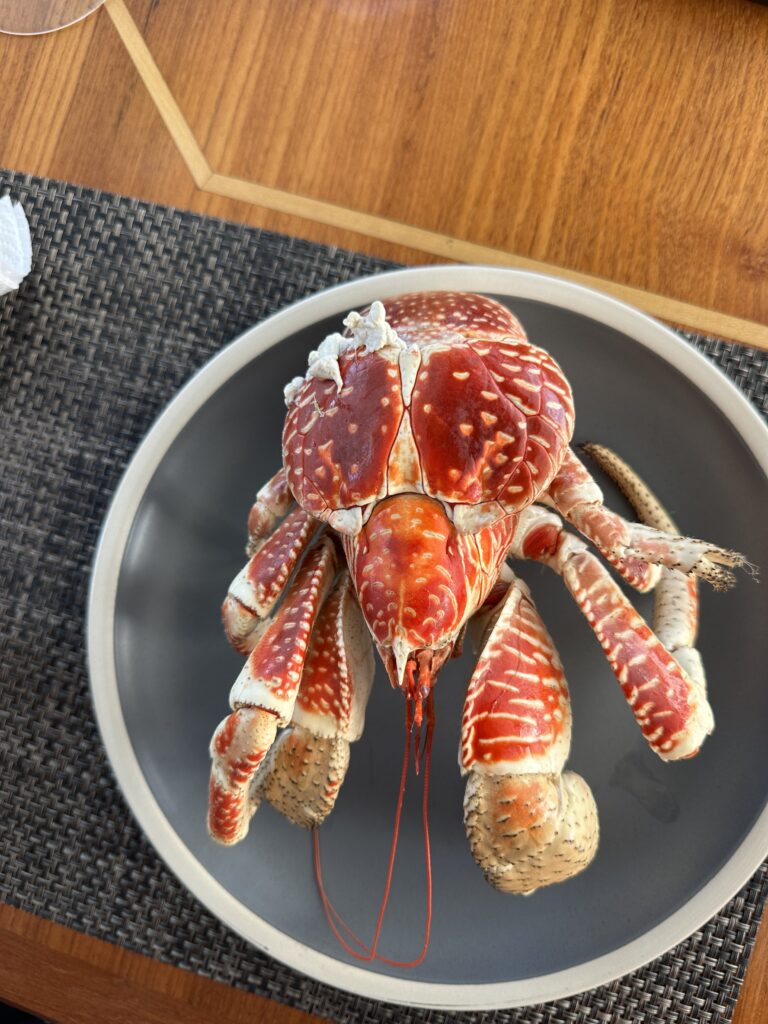
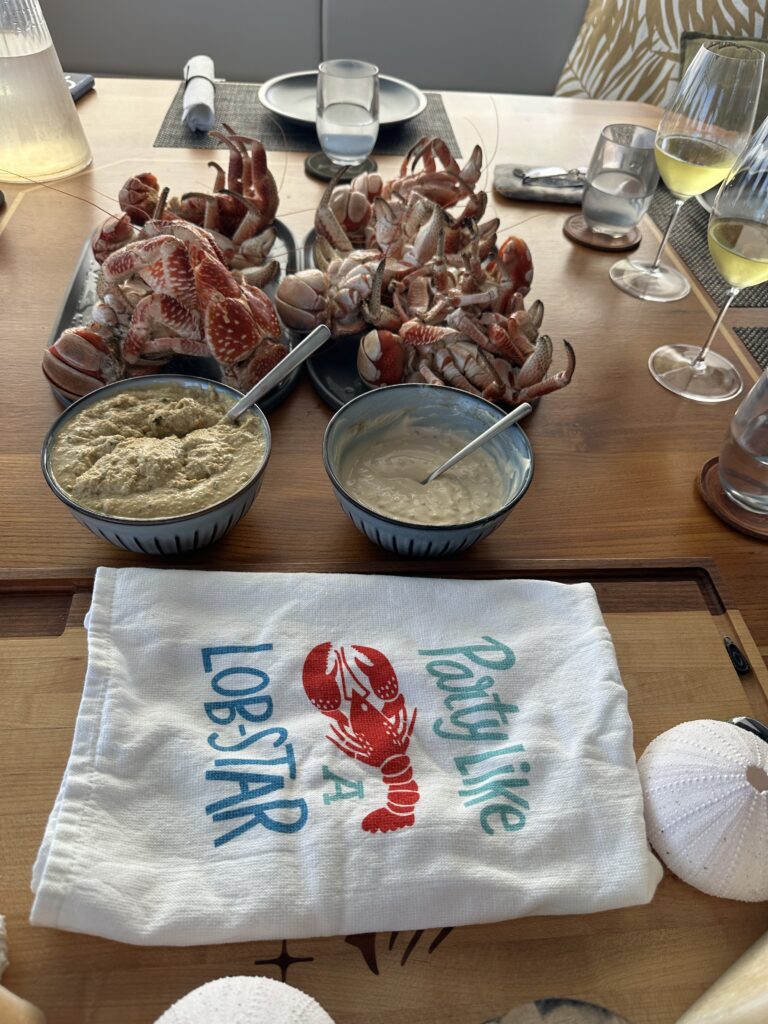
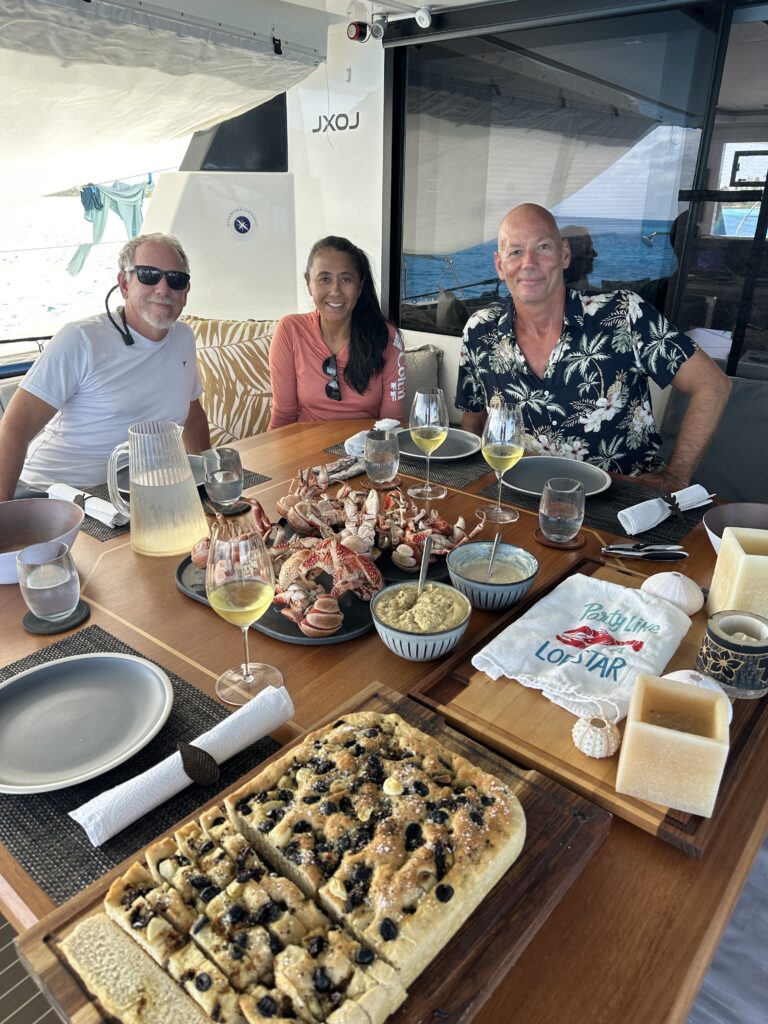
We stayed for a week in this anchorage, doing lots of activities onshore, mostly. We made a bonfire on the beach with fellow cruisers, explored the outer reef and the different motus (islets) nearby.
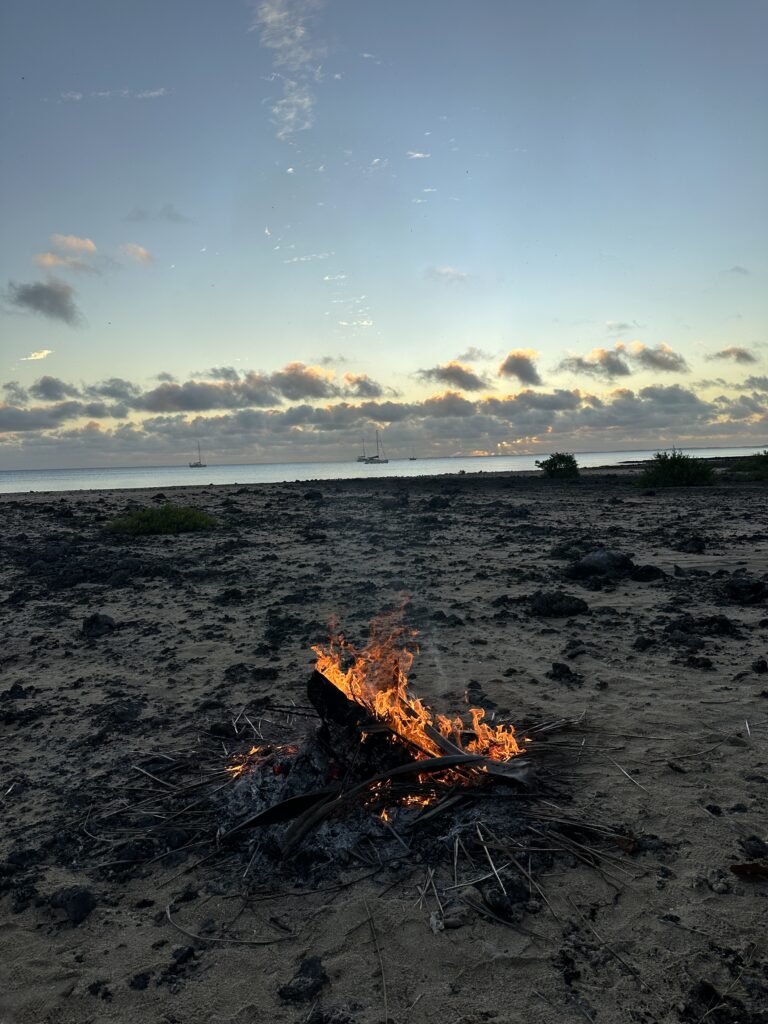
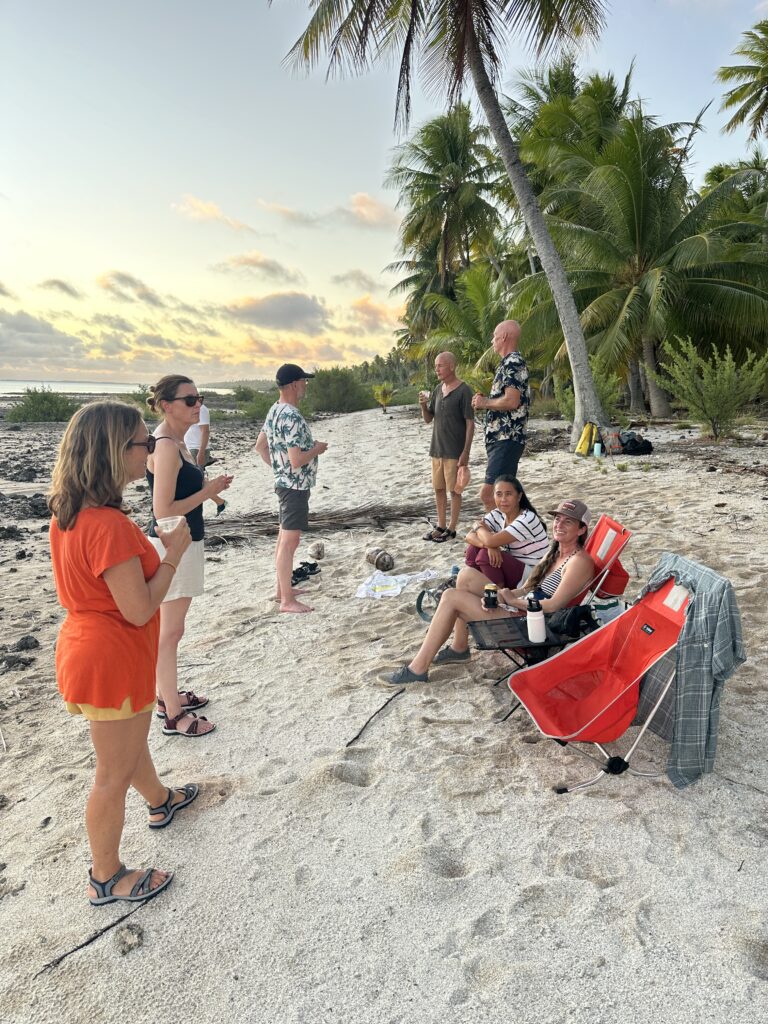
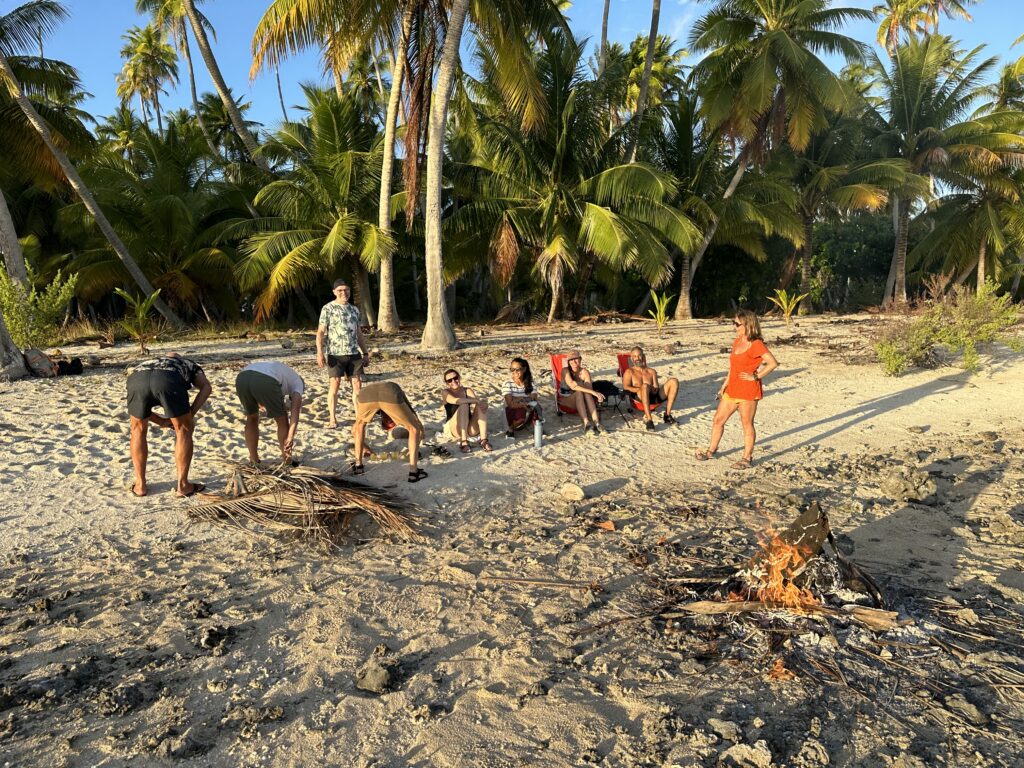
It turned out that the underwater life was not so rich at this anchorage, so after a week, the captain got restless. We decided to head out for the next atoll, Tahanea, which is an uninhabited atoll defined as a natural reserve. We are expecting to find much more life in the waters there.
